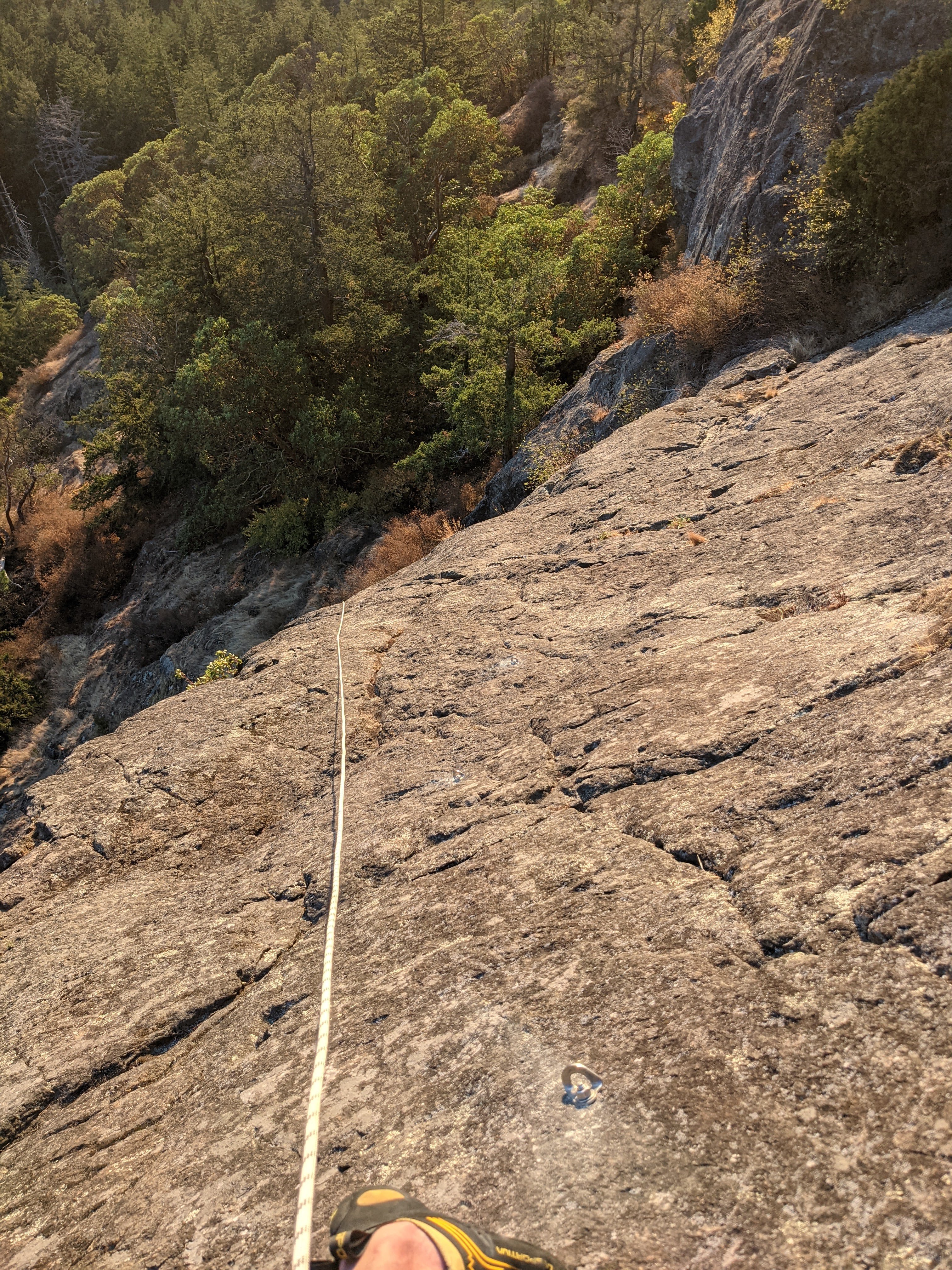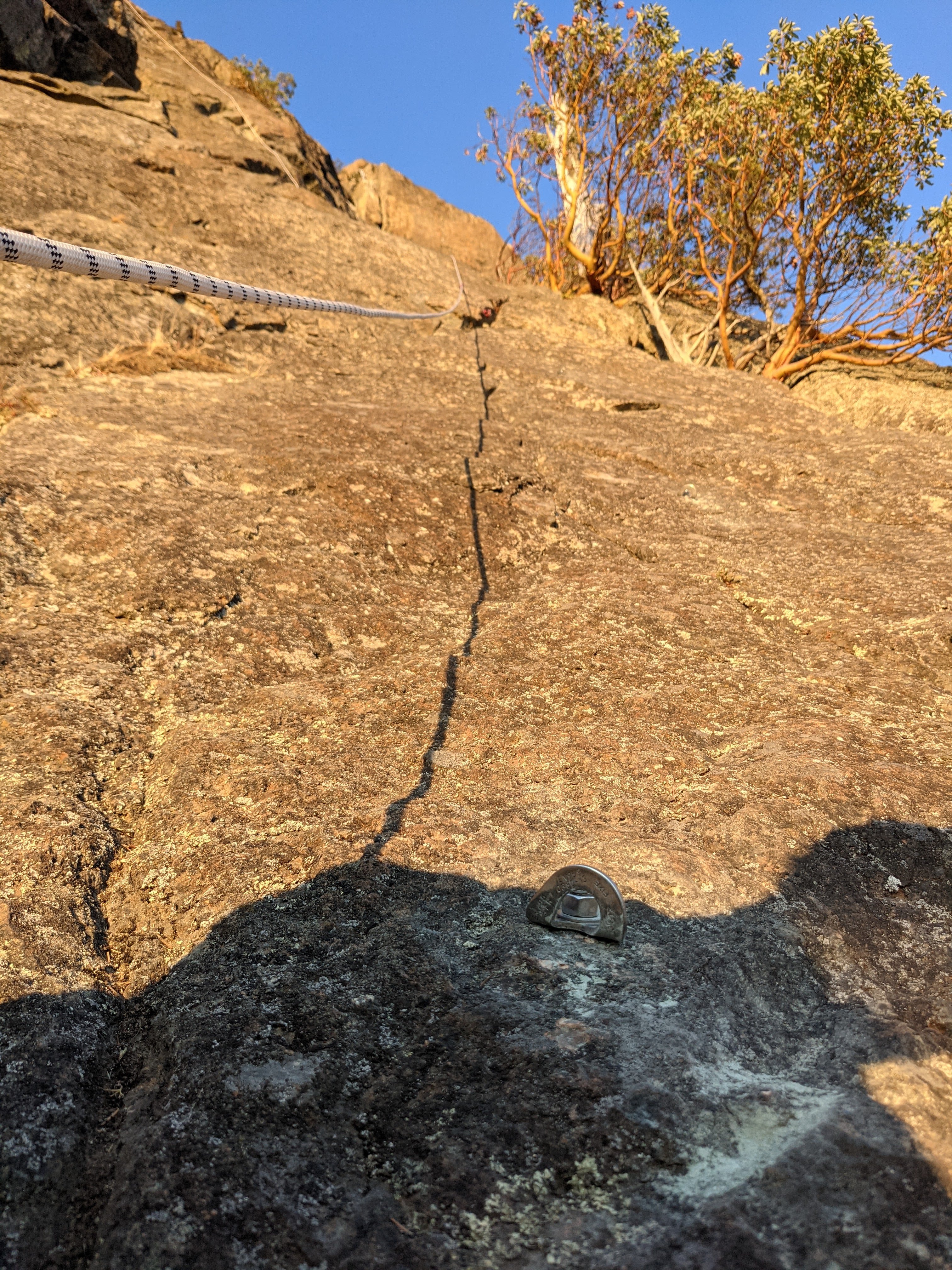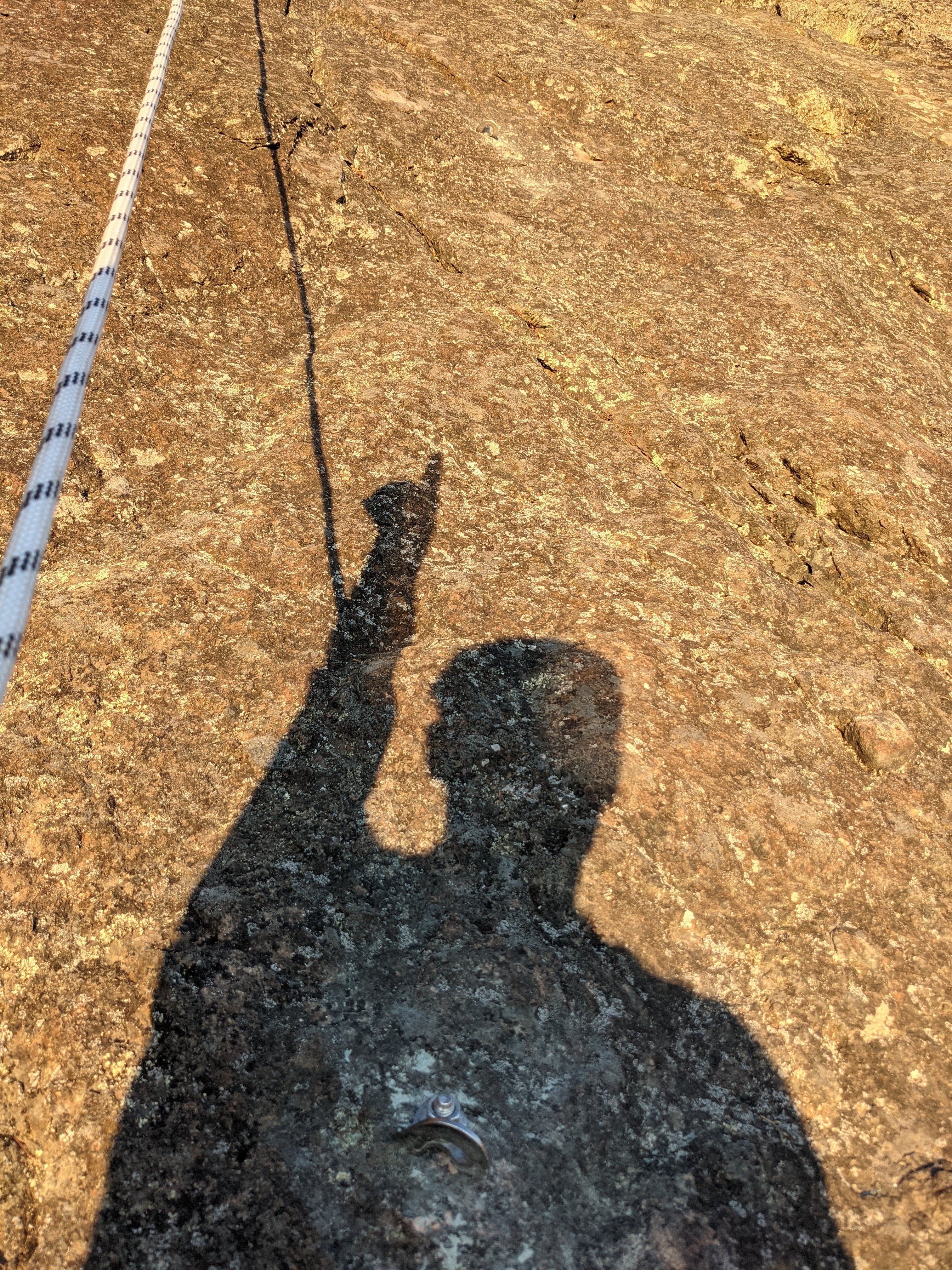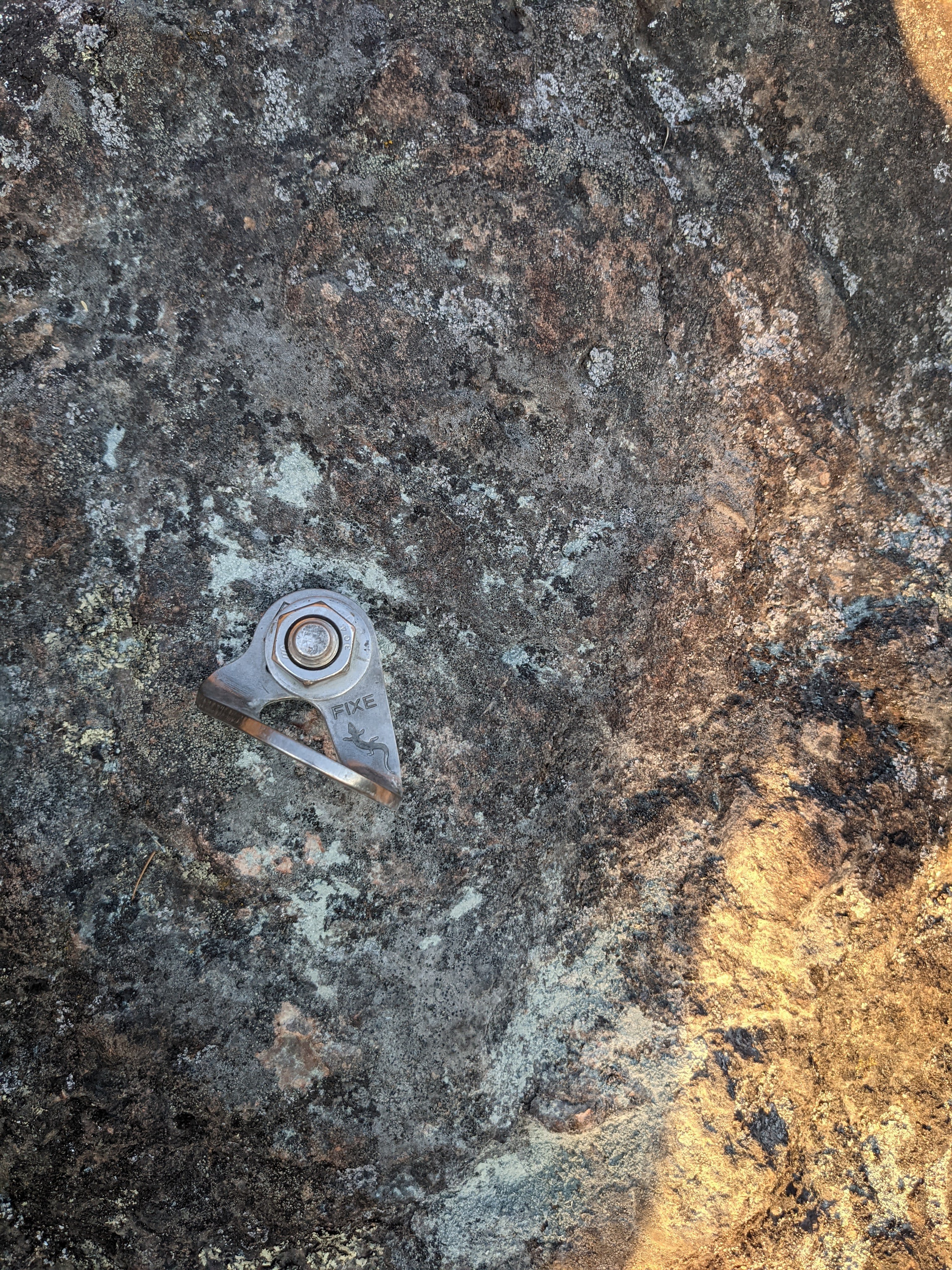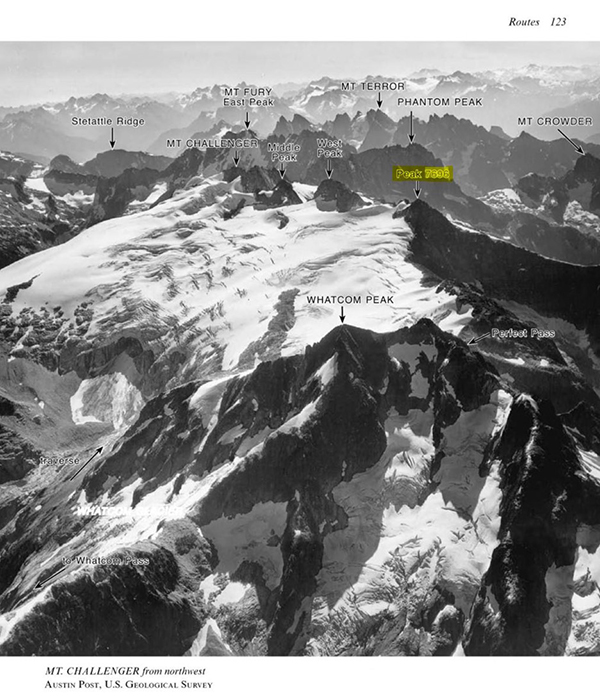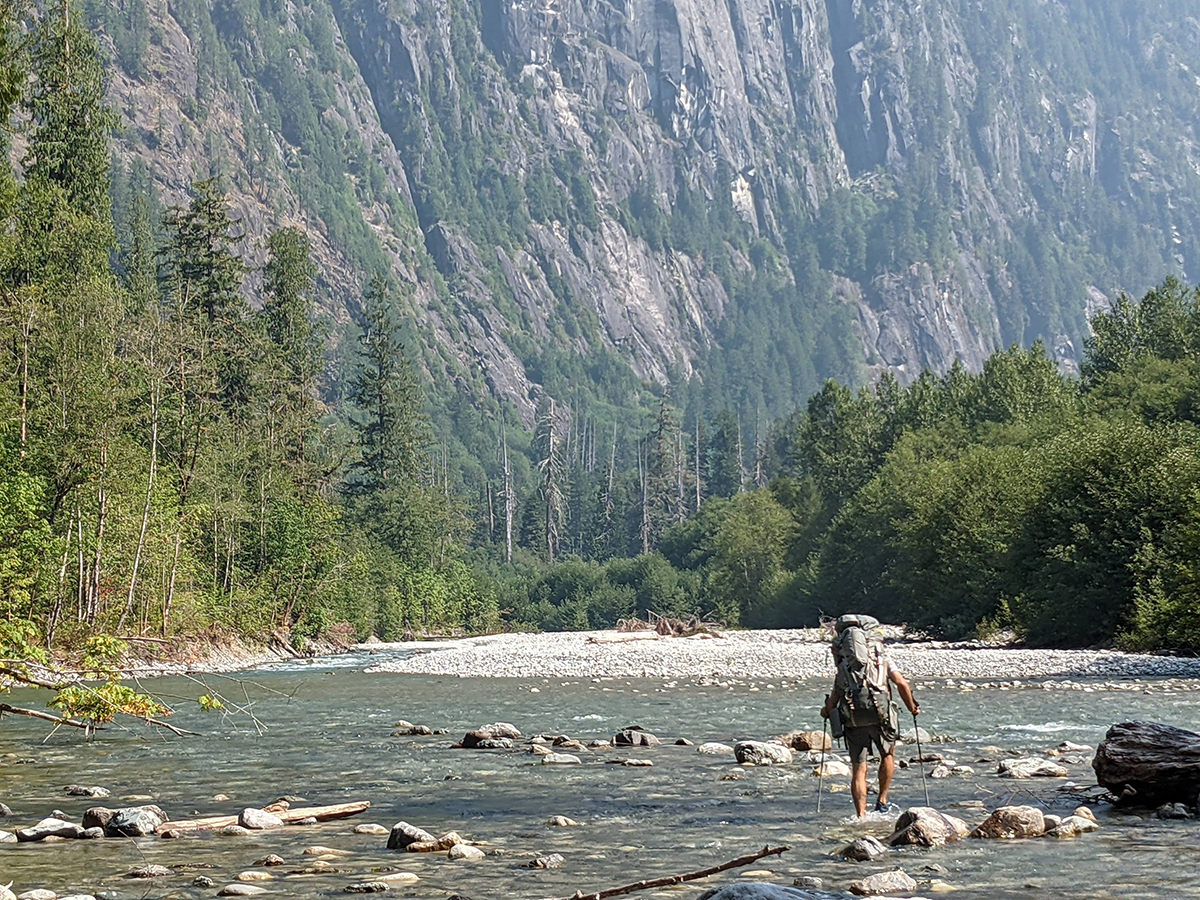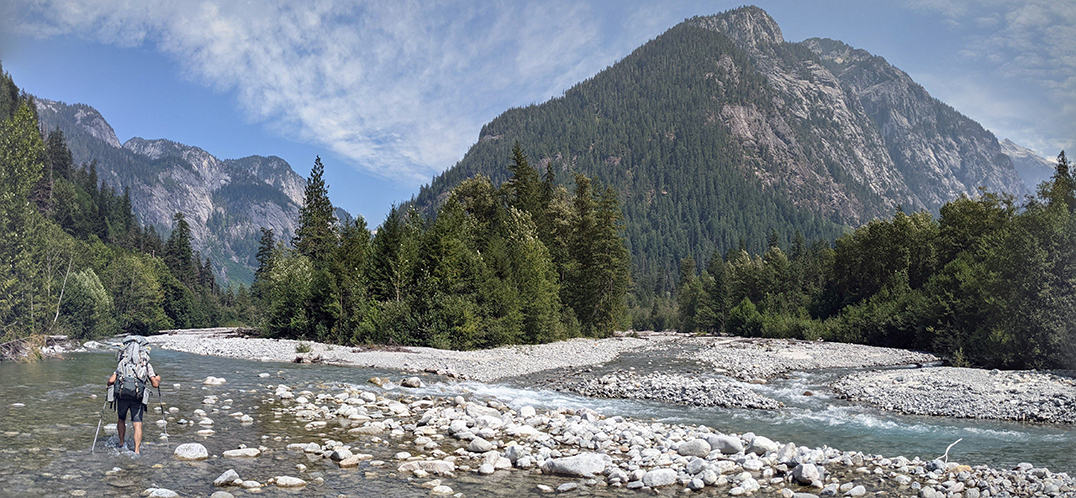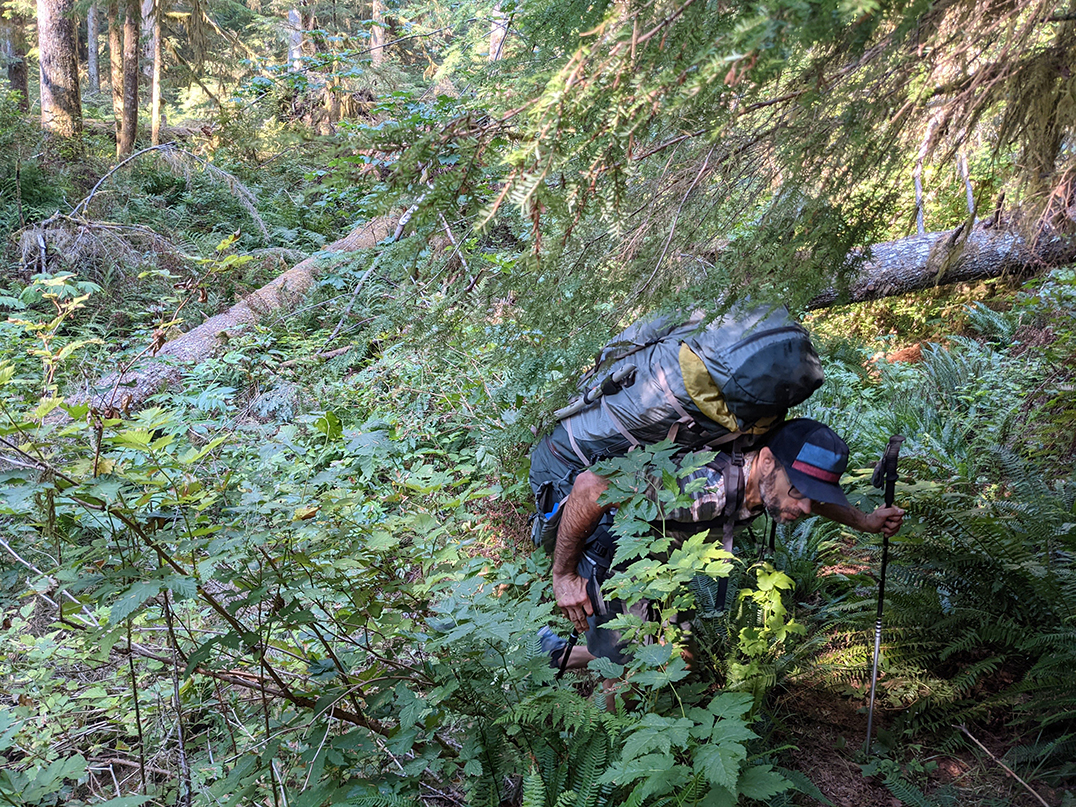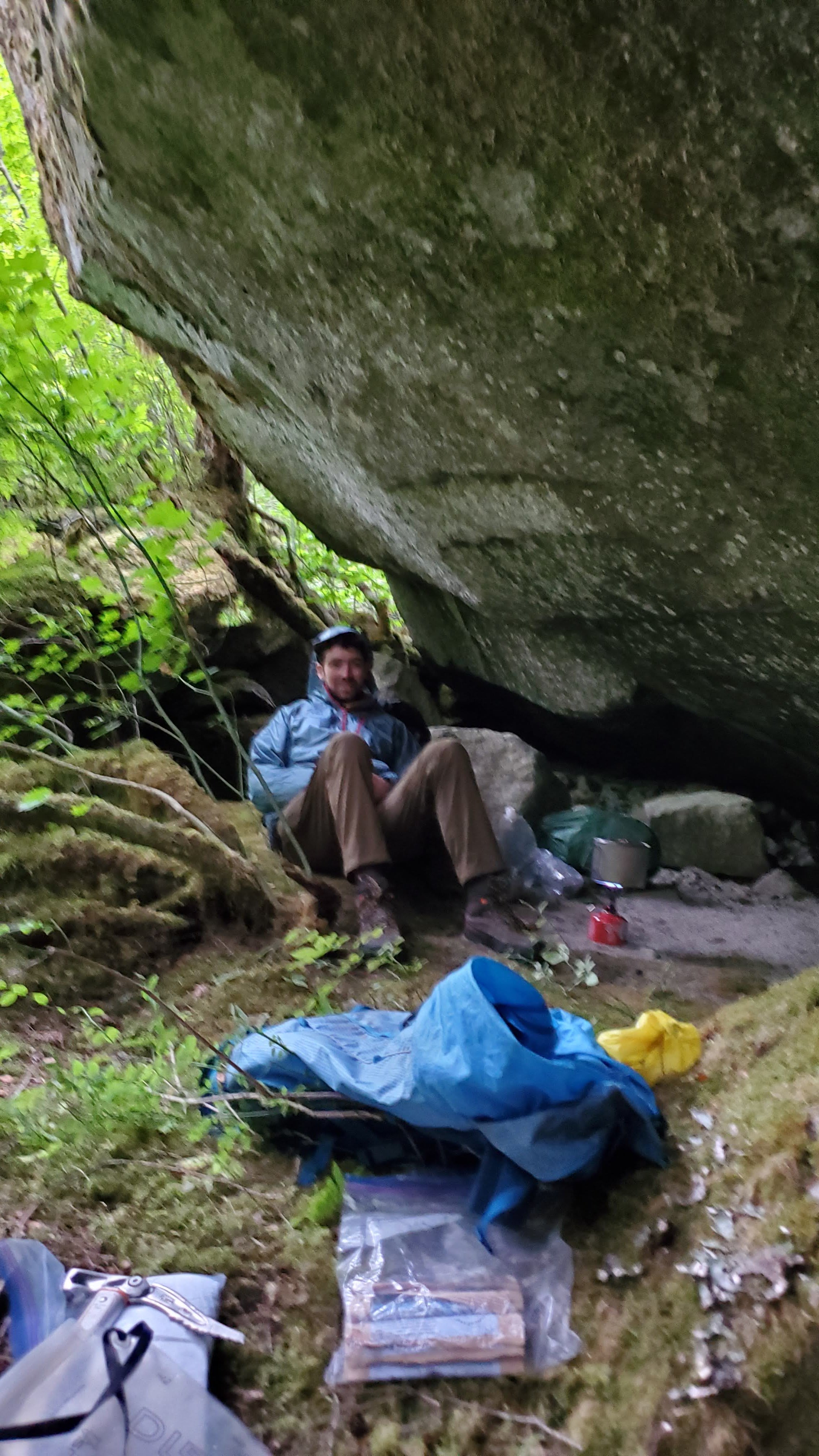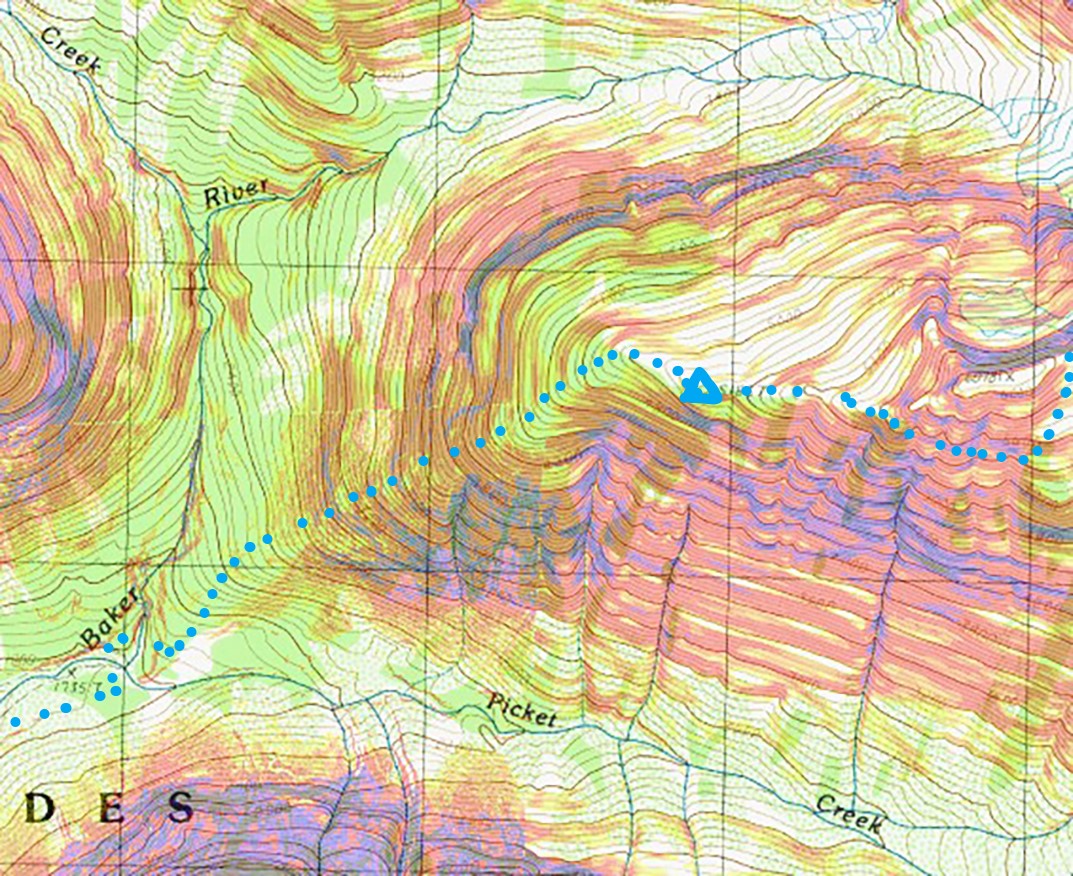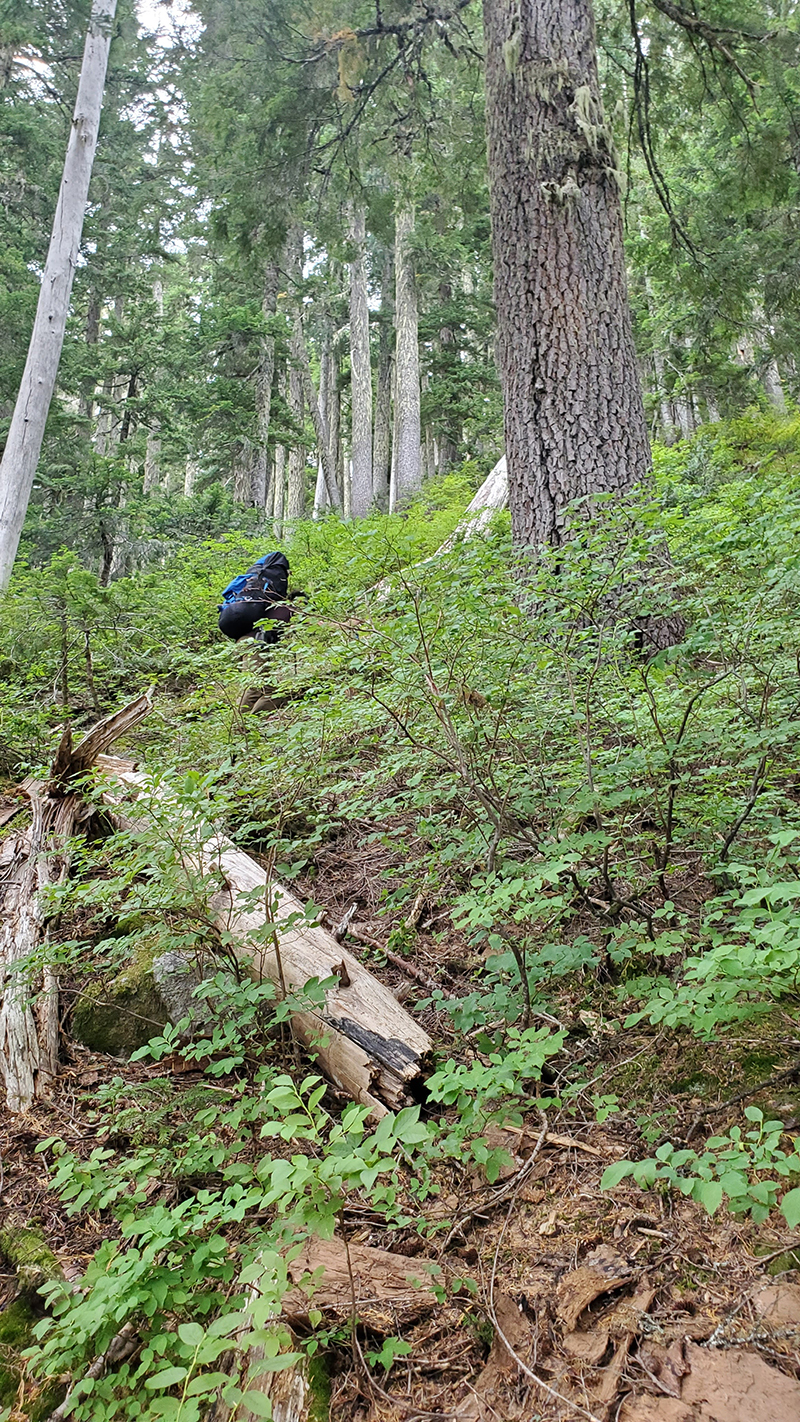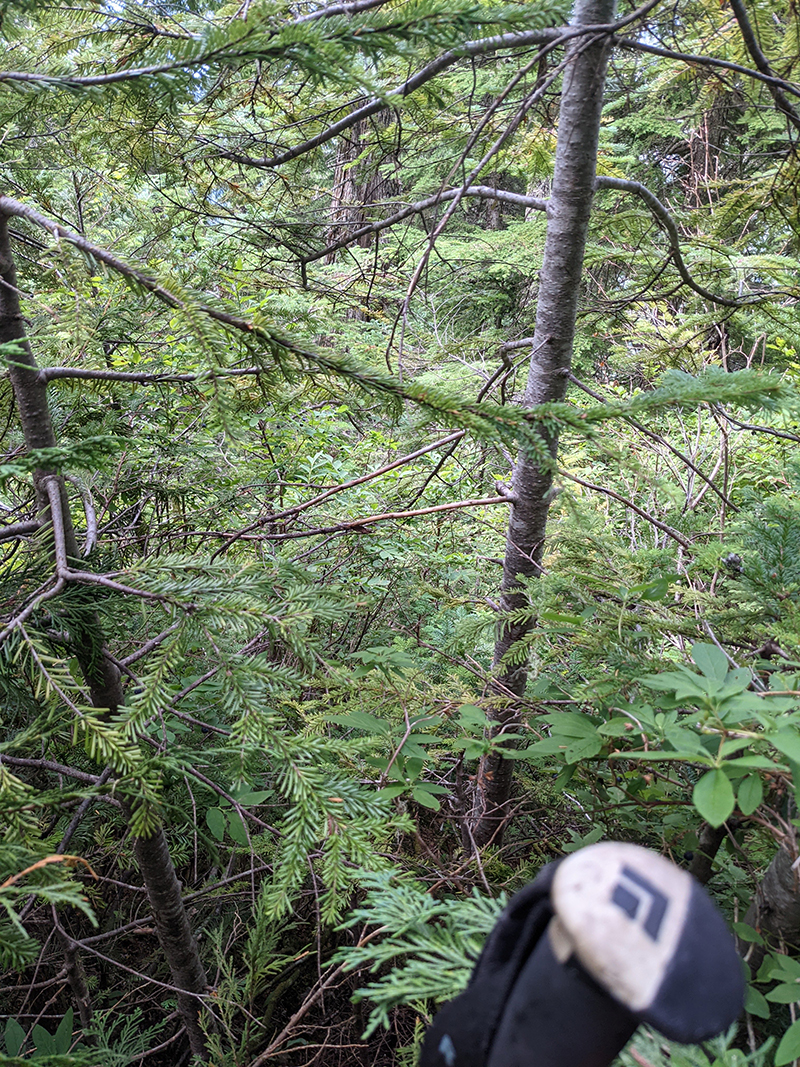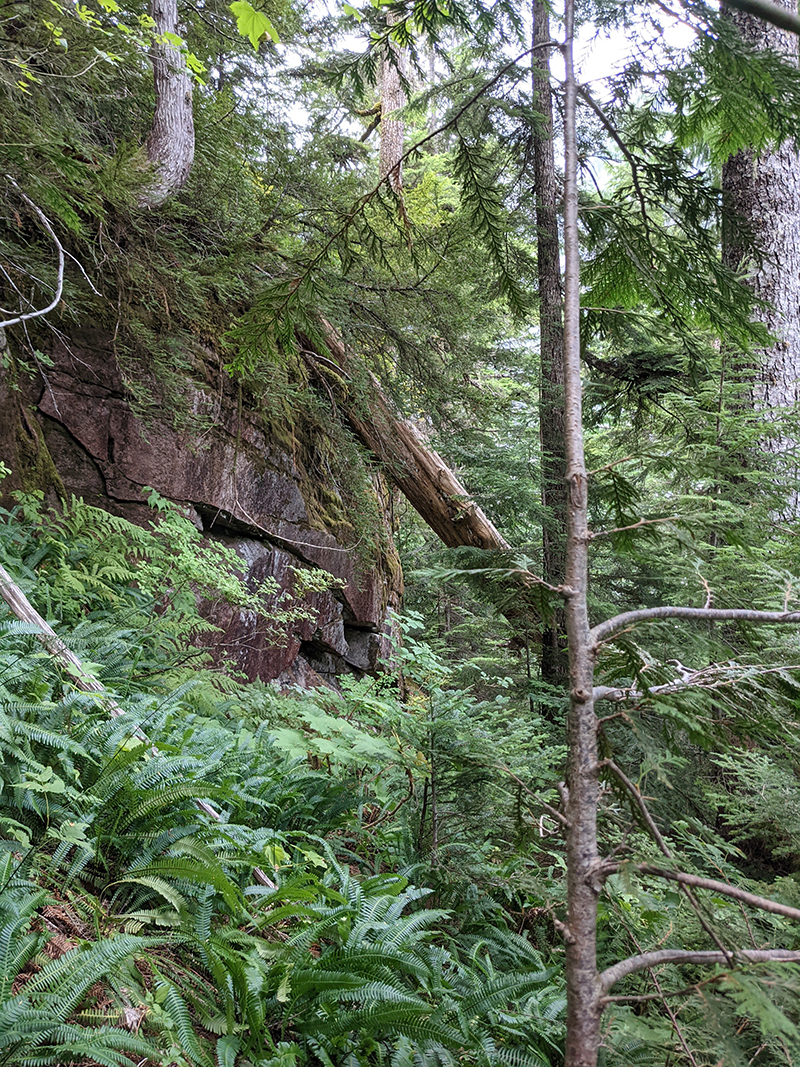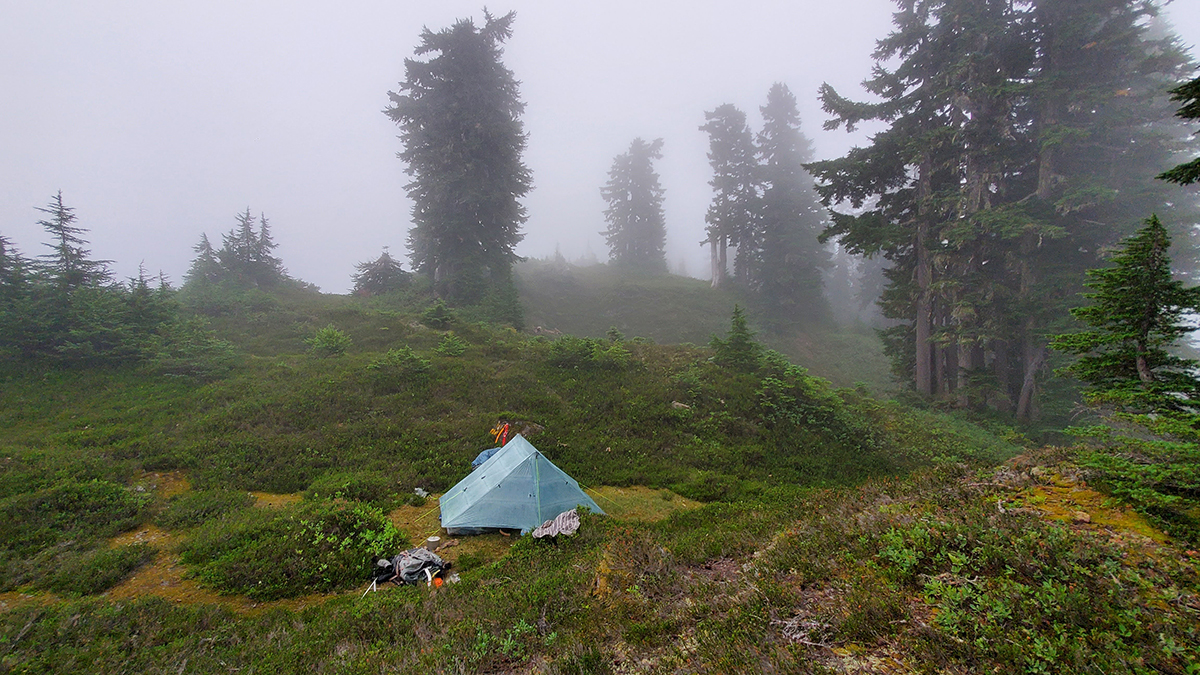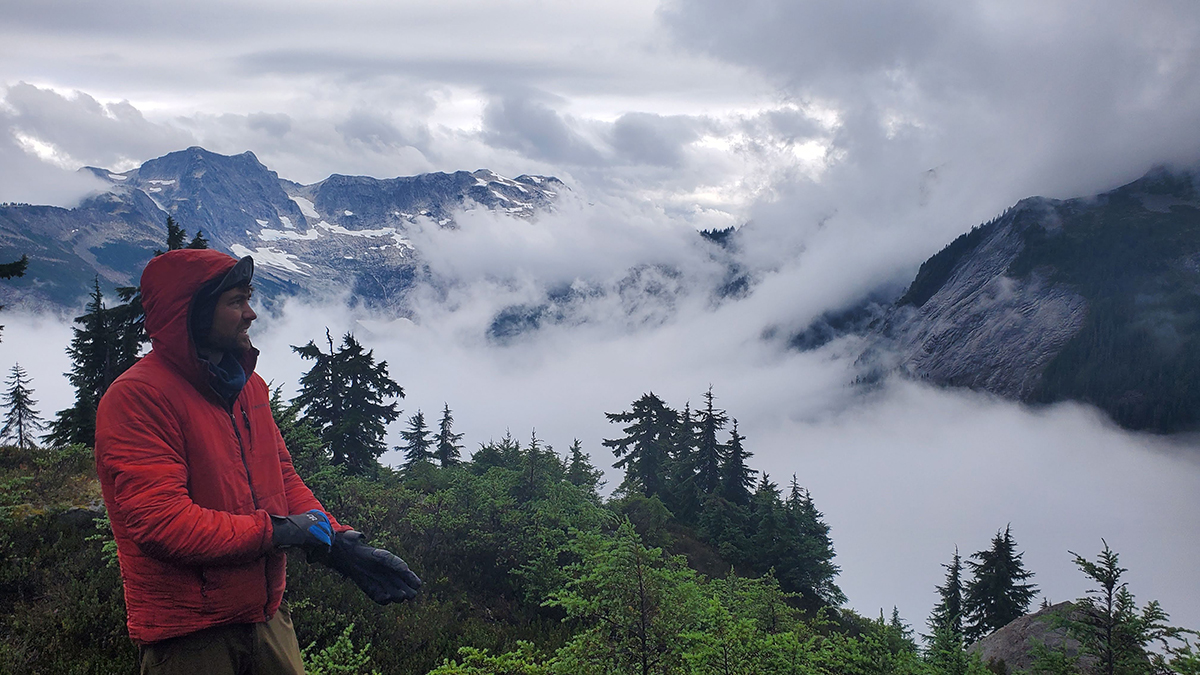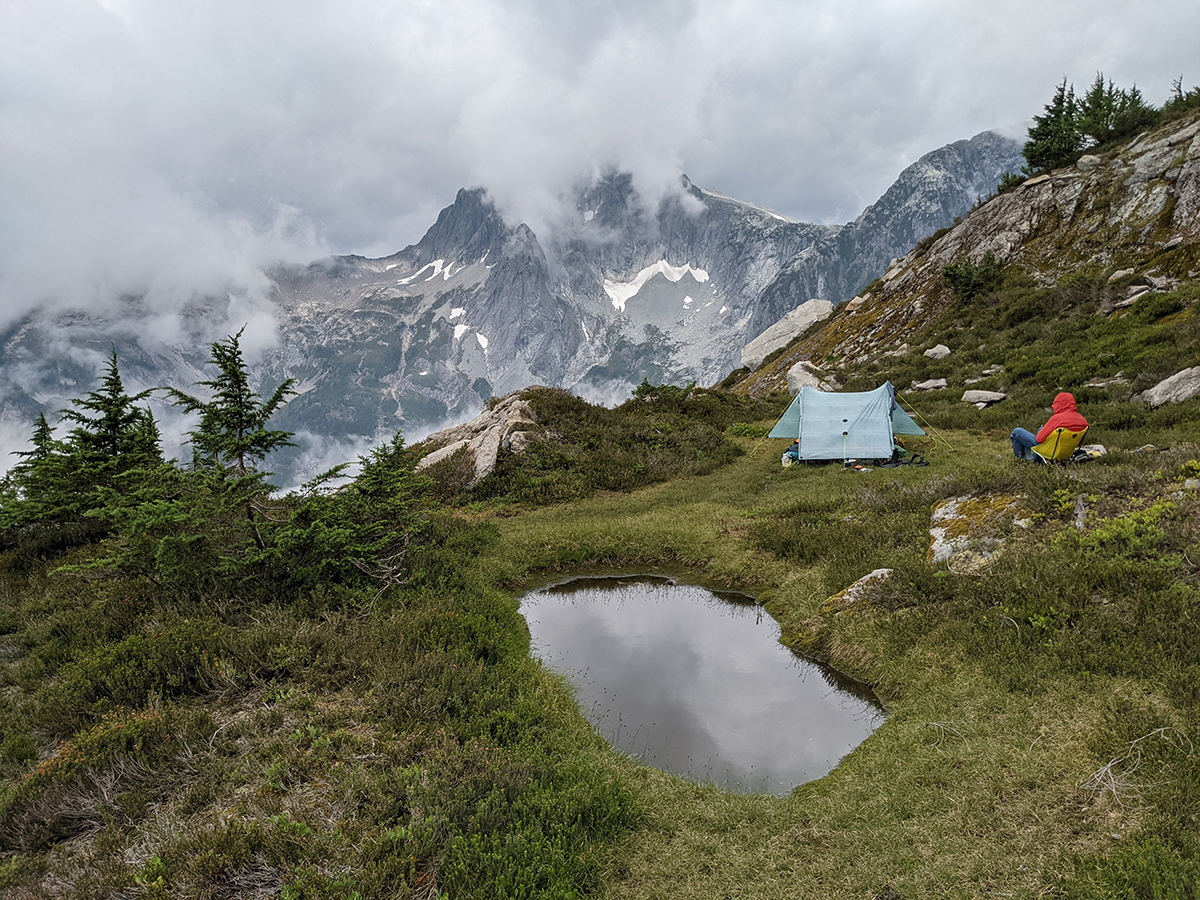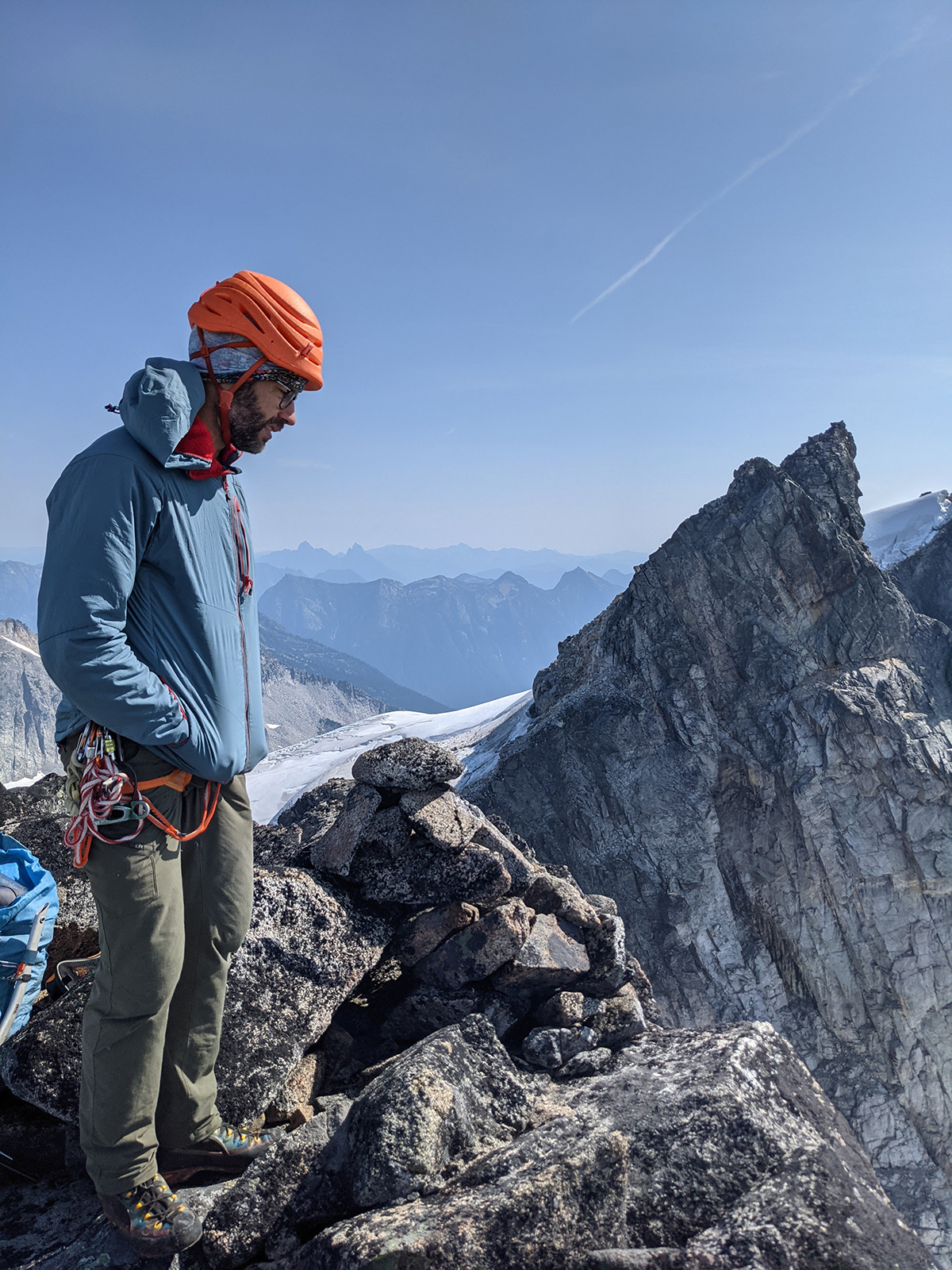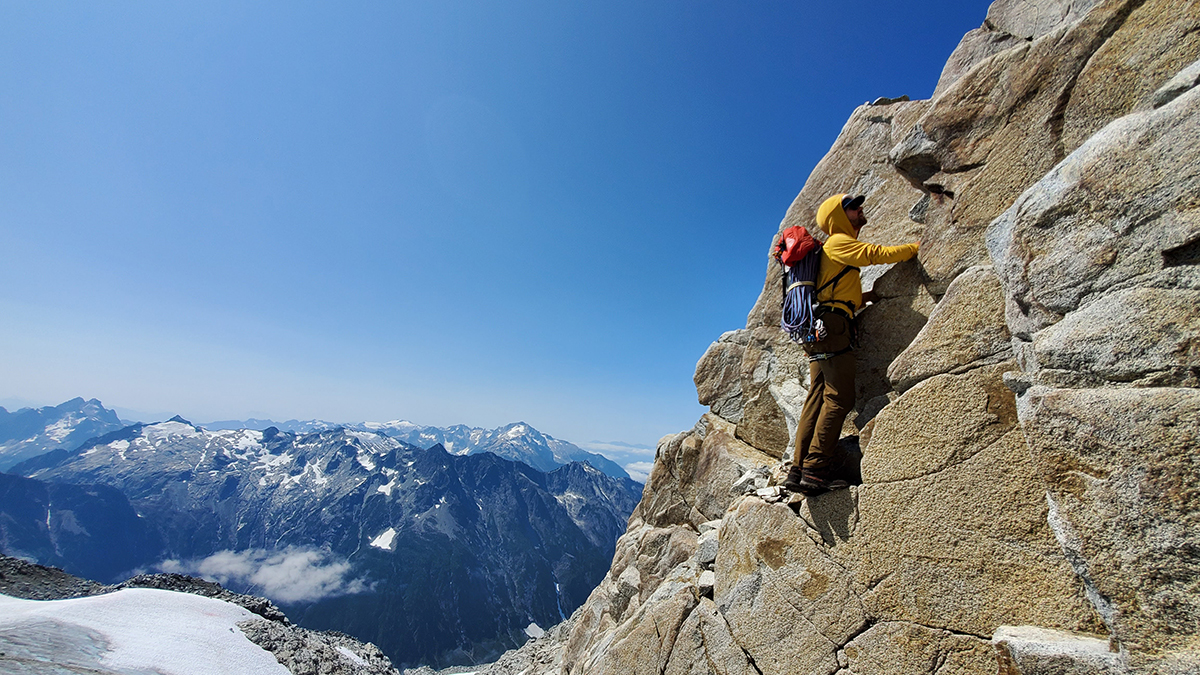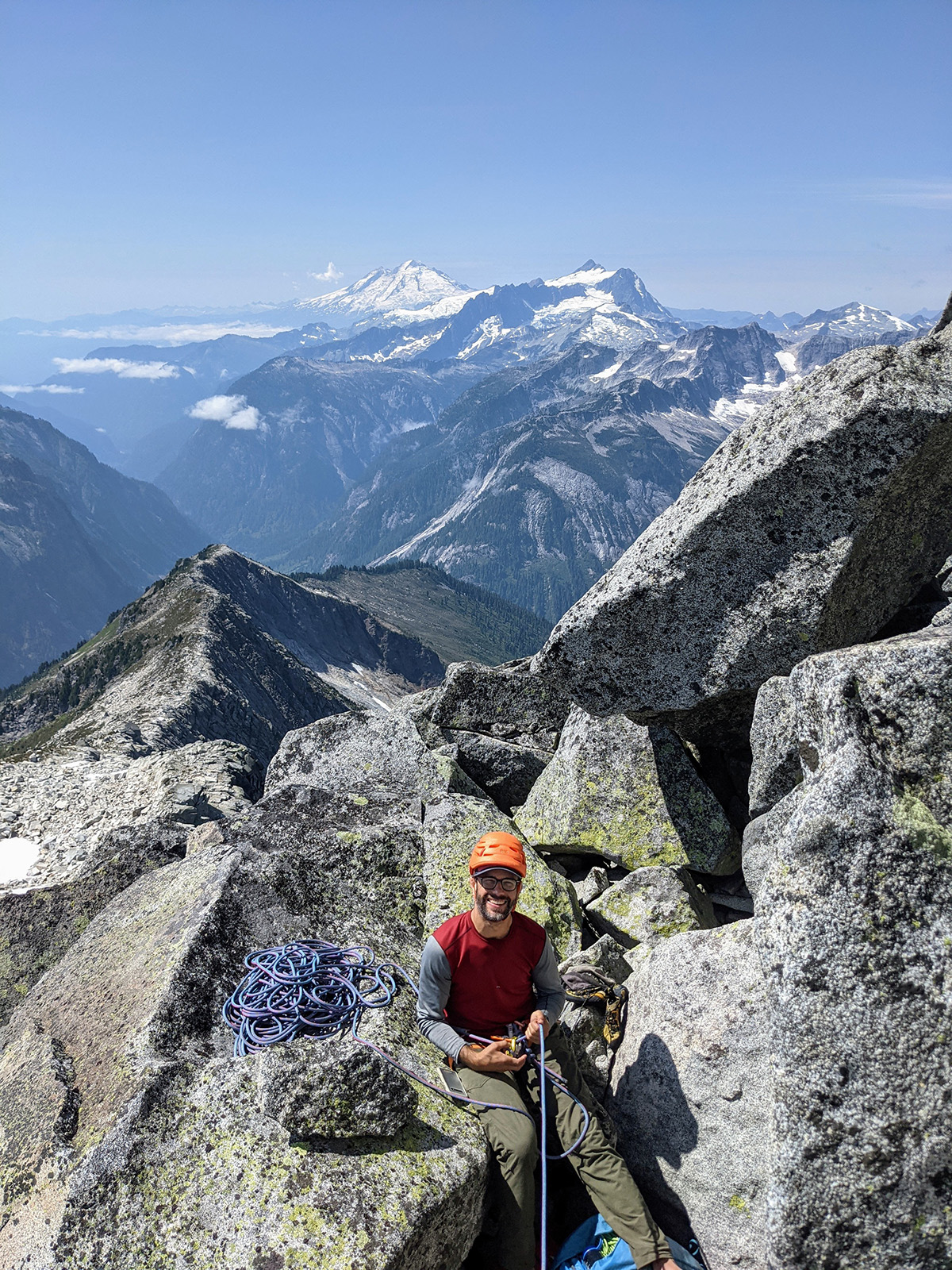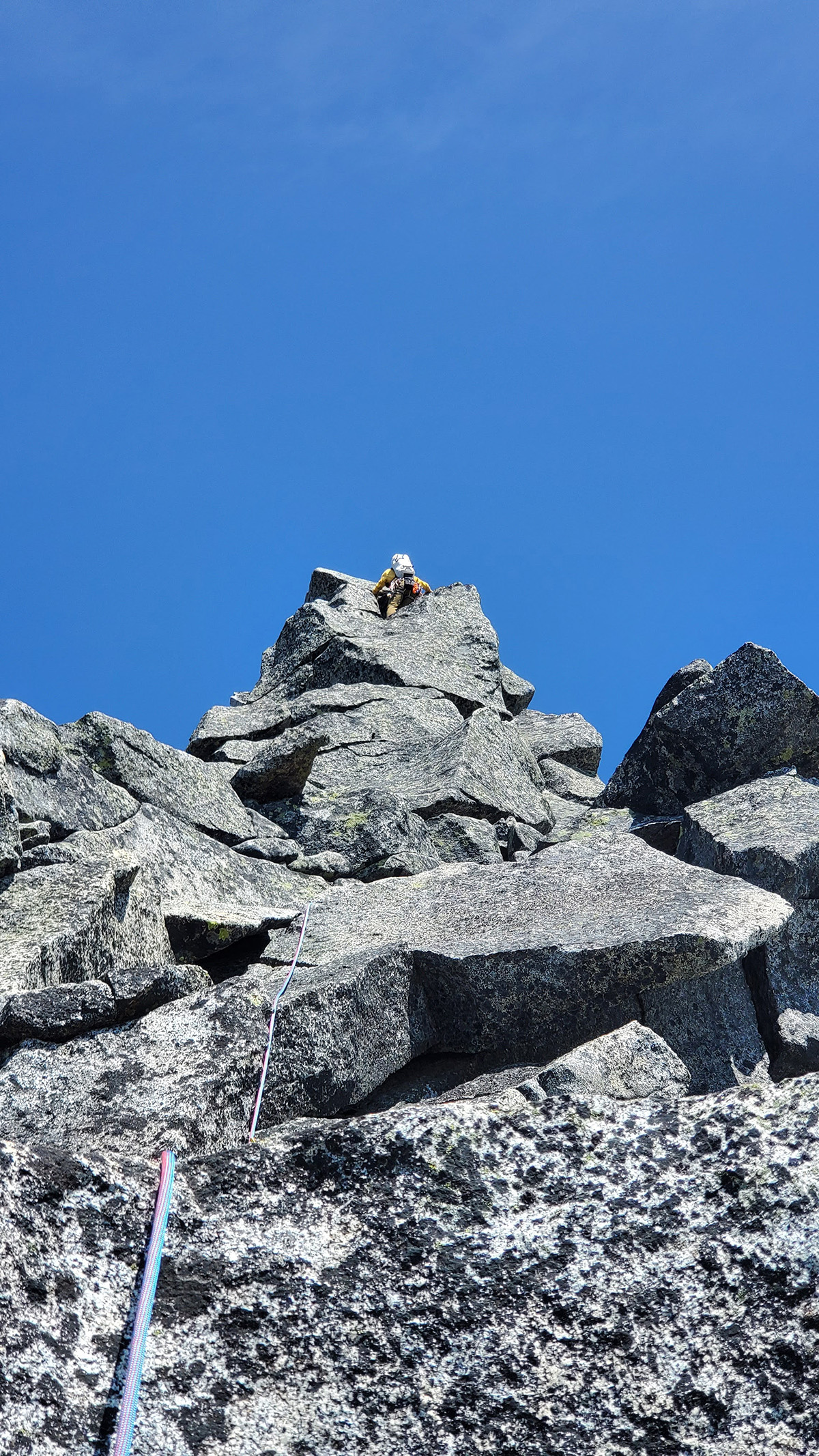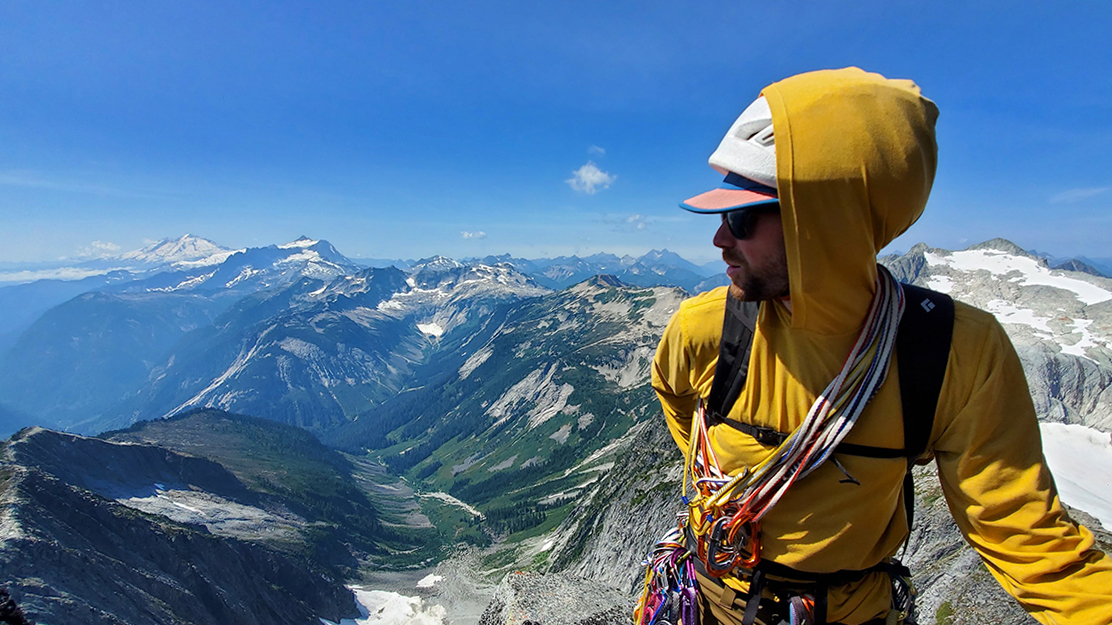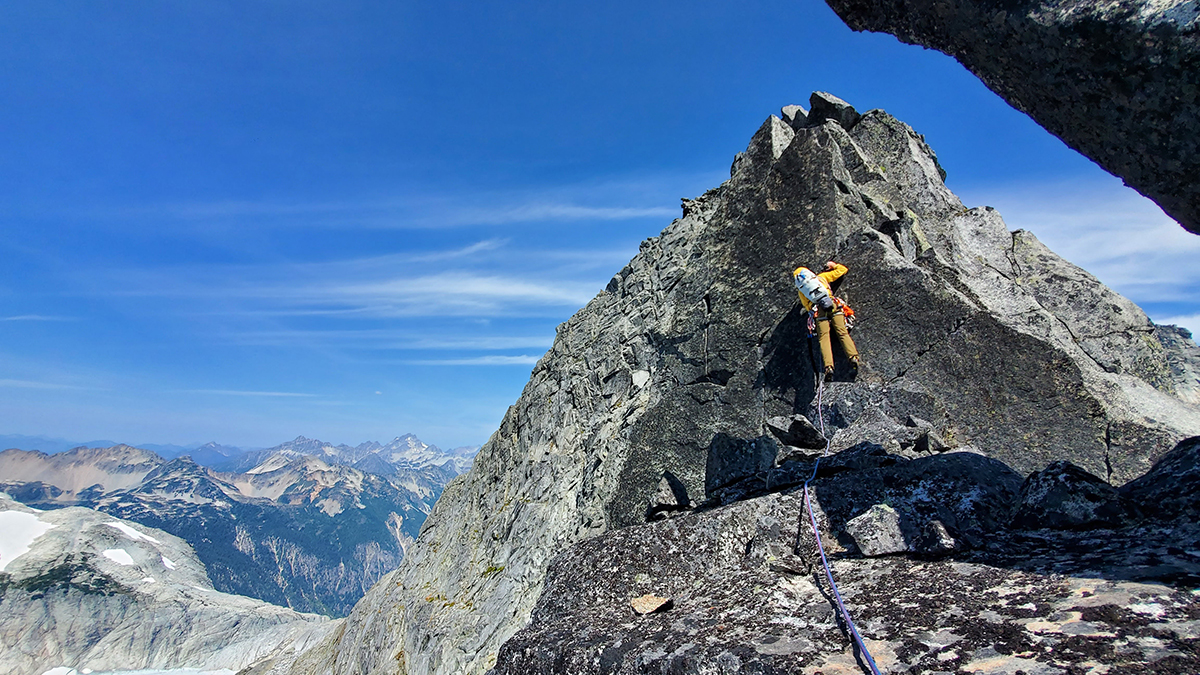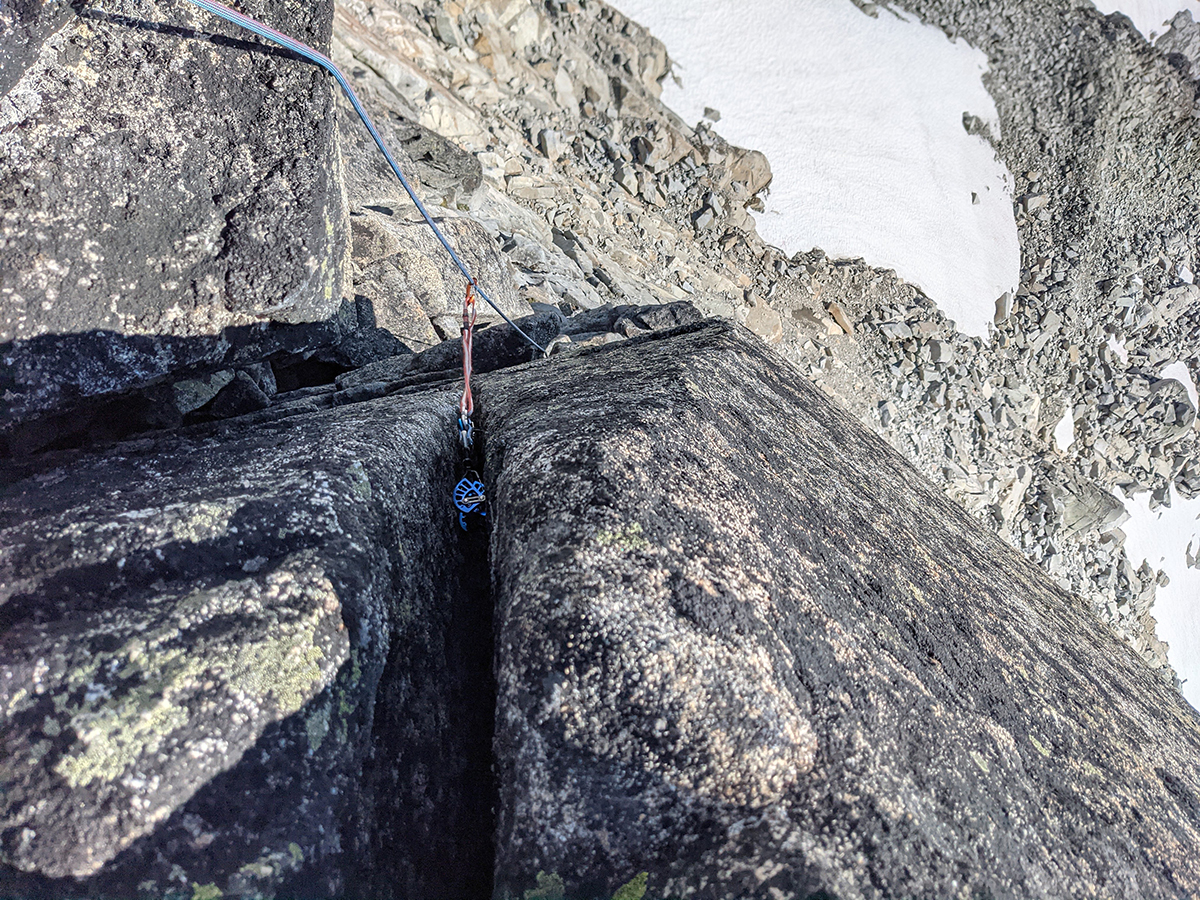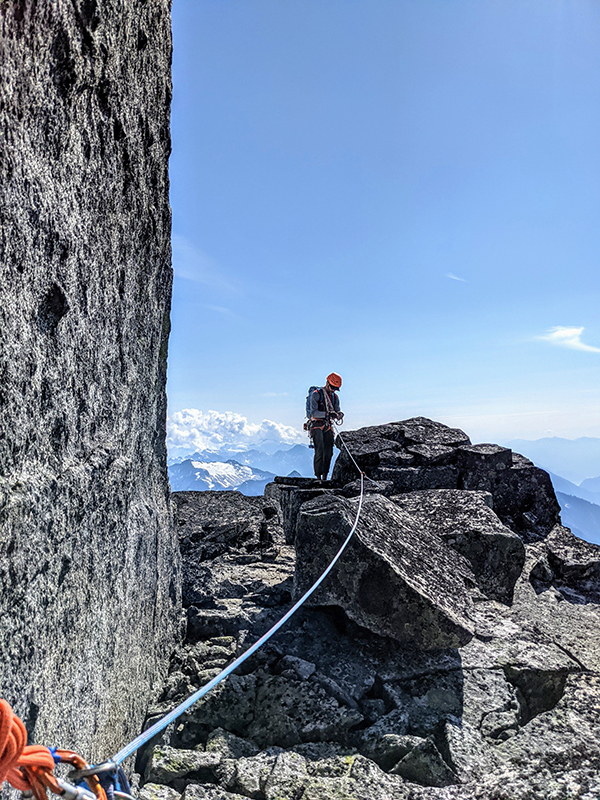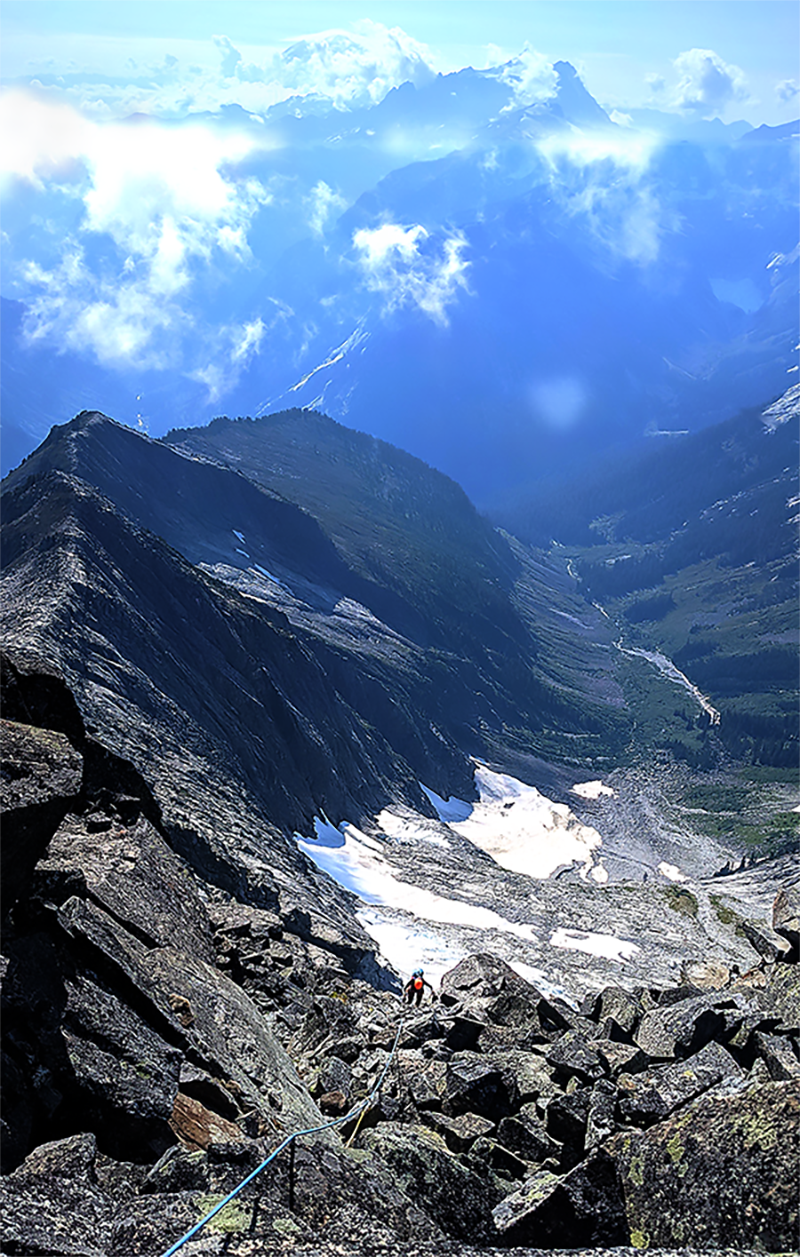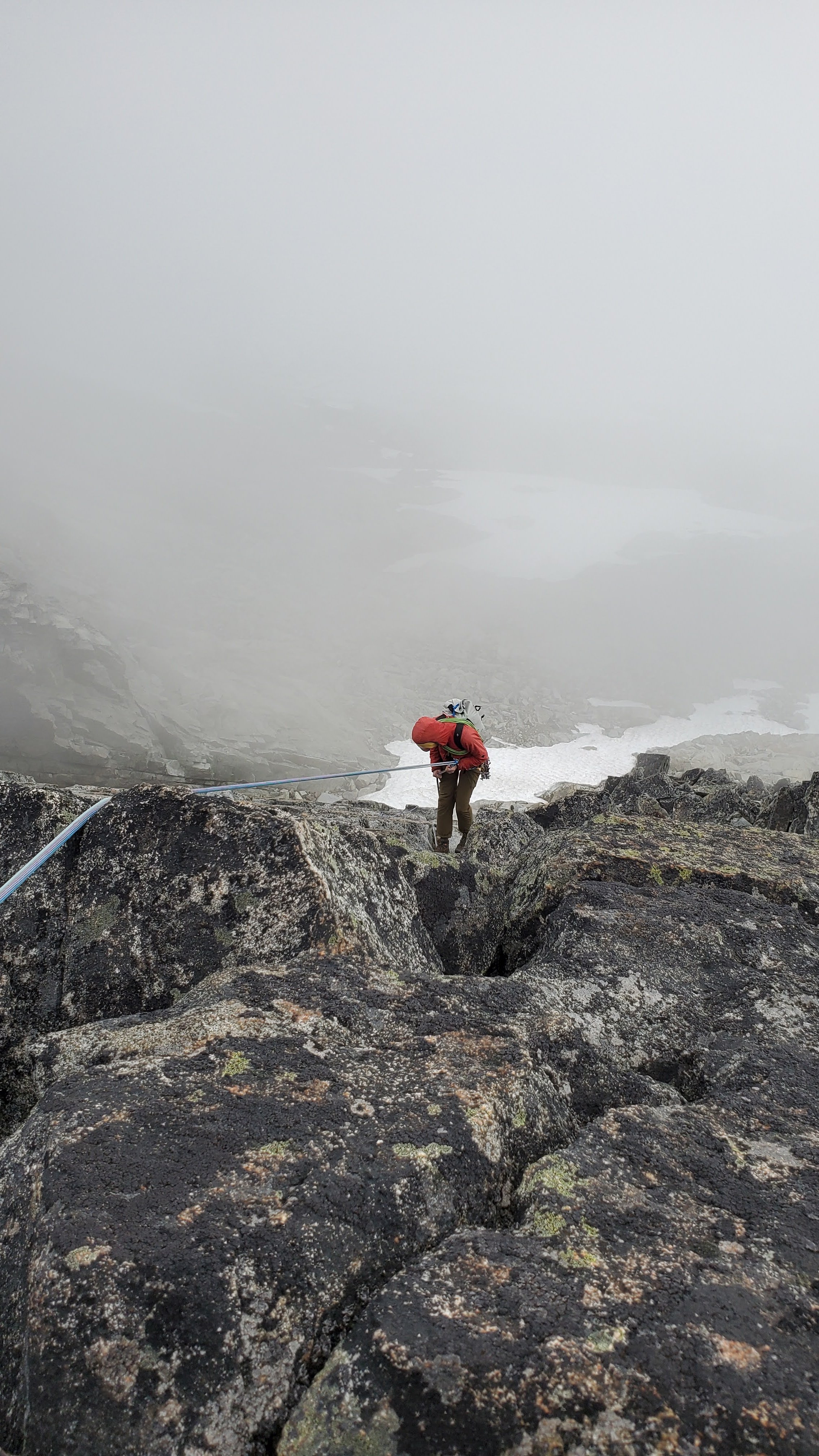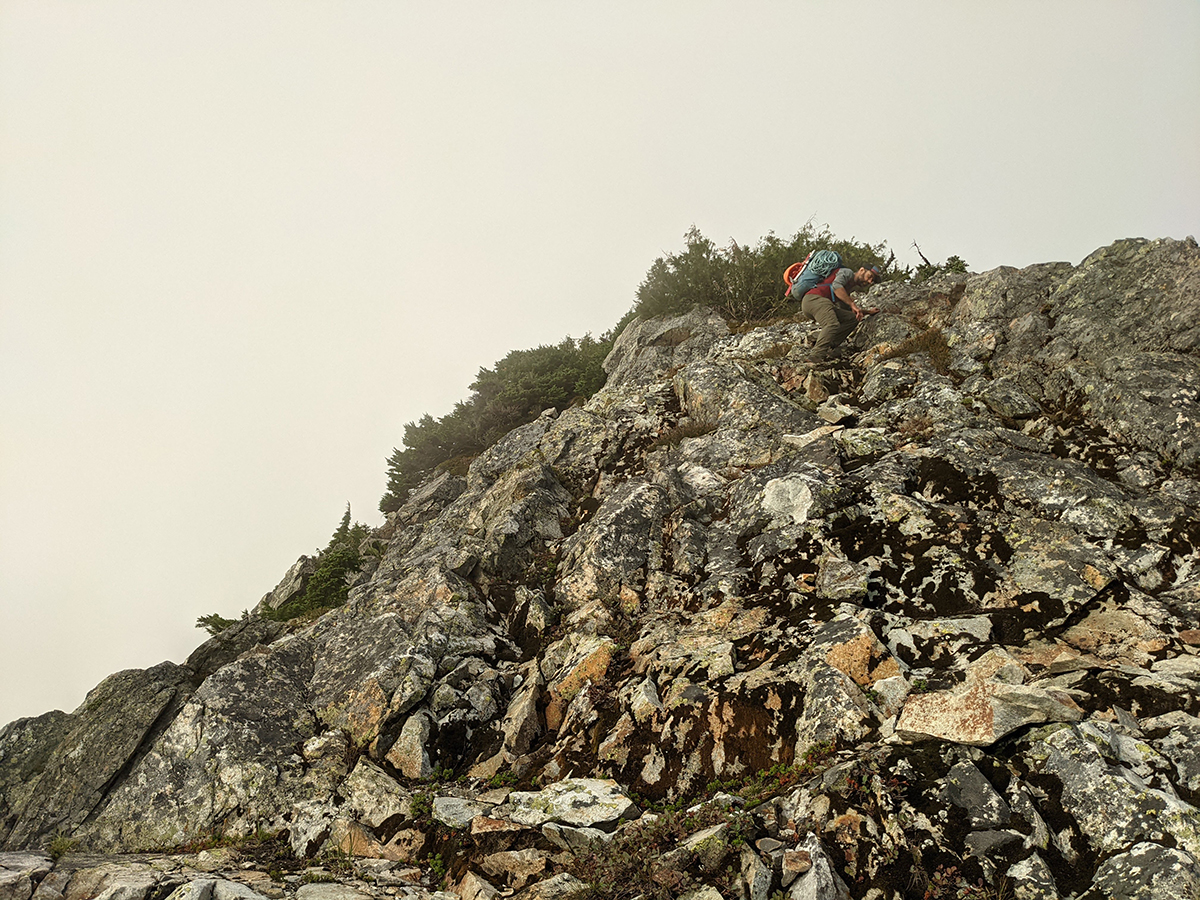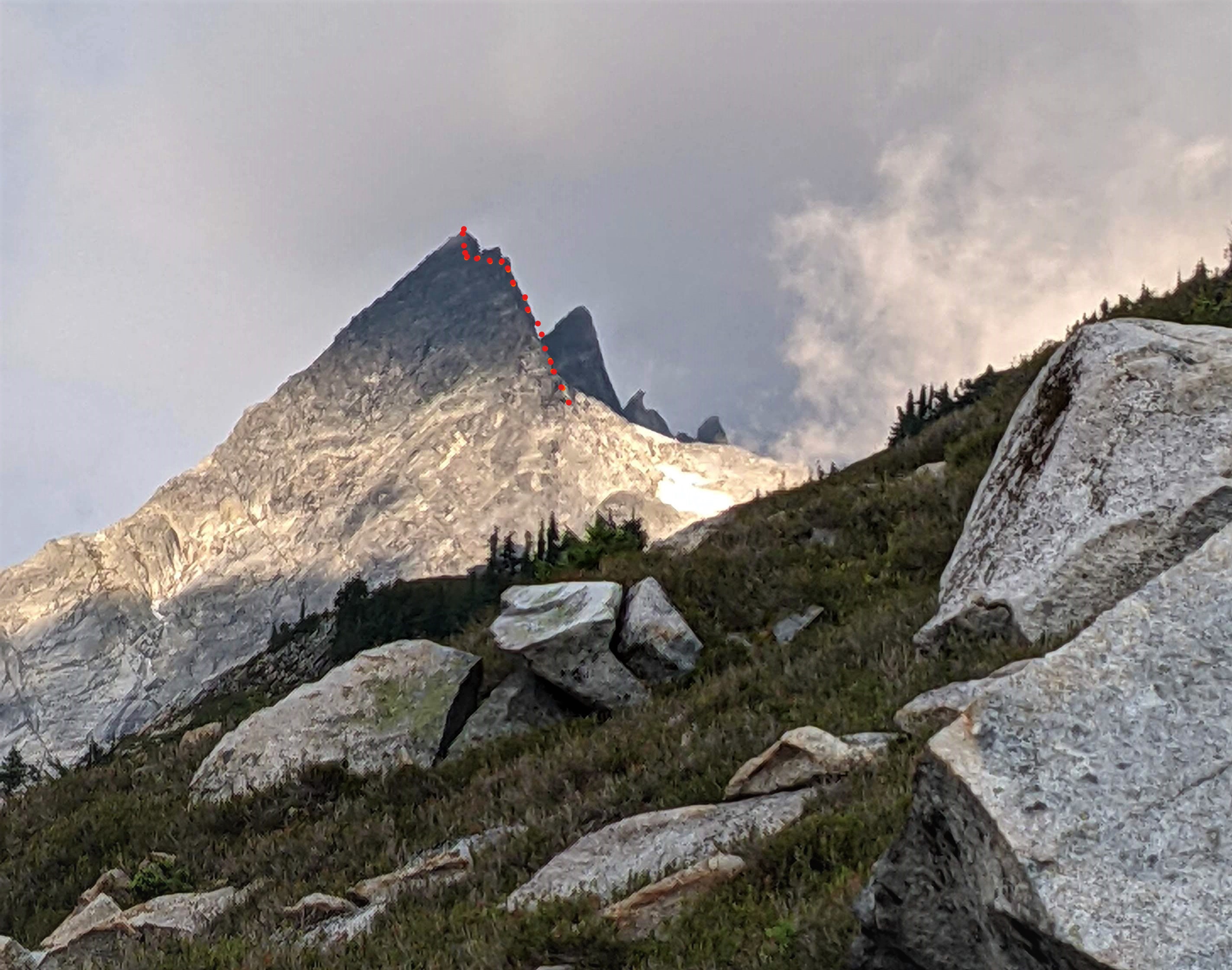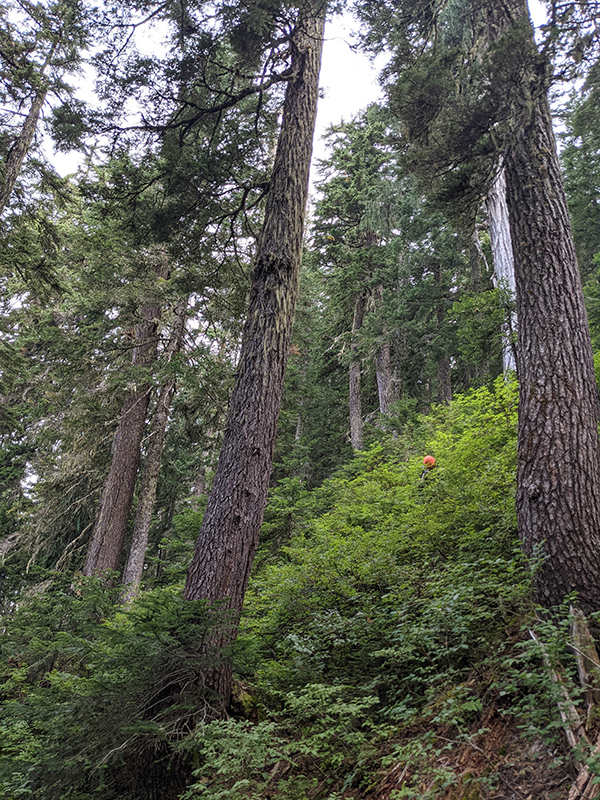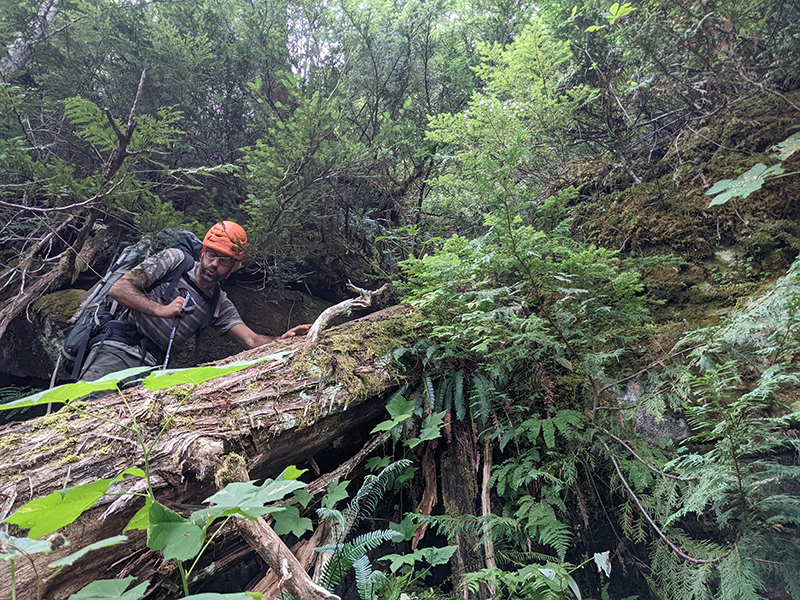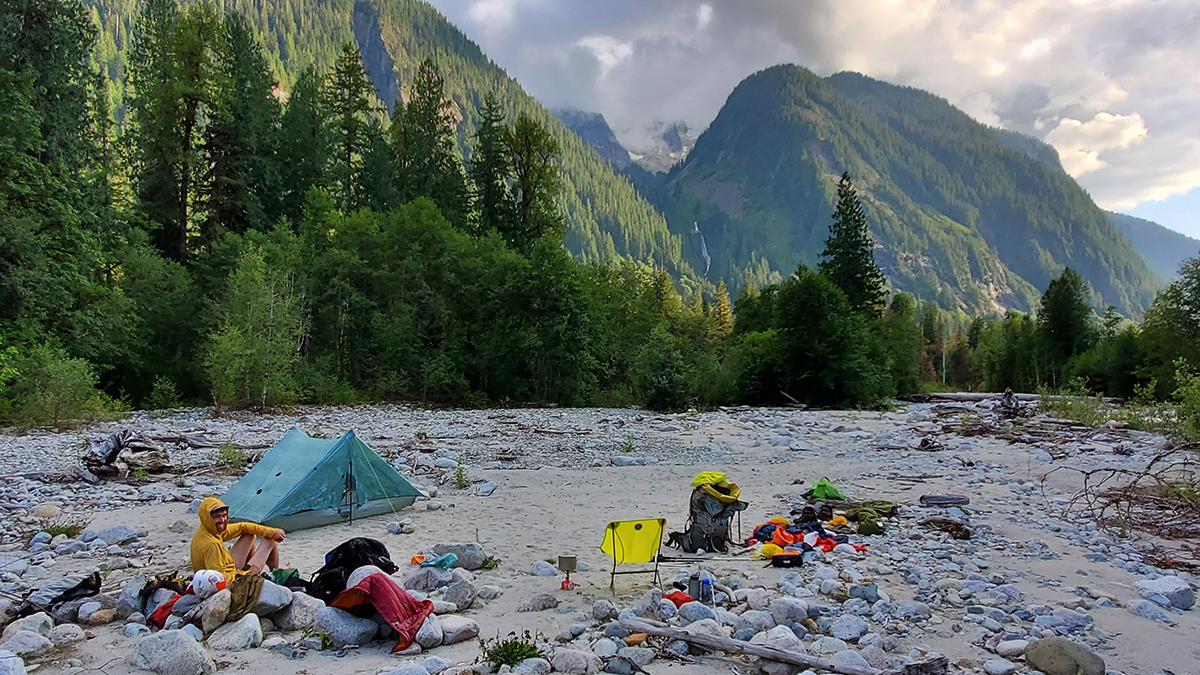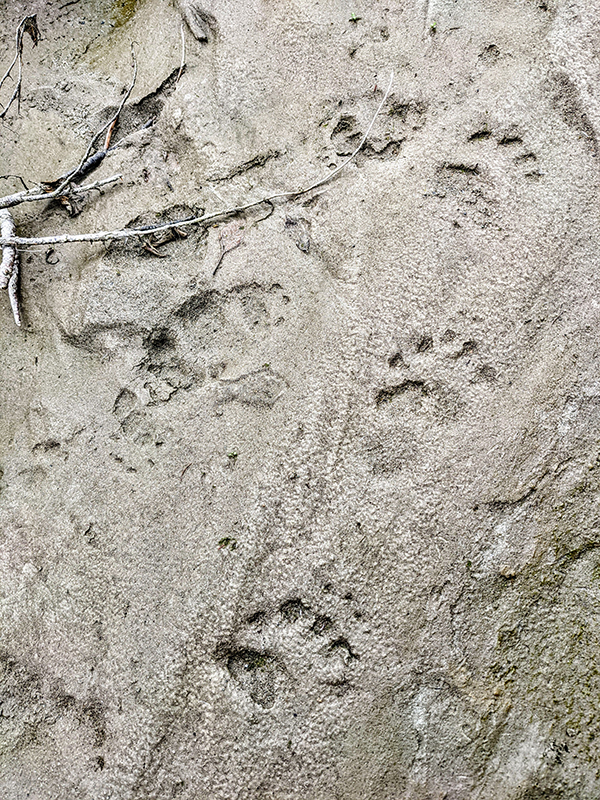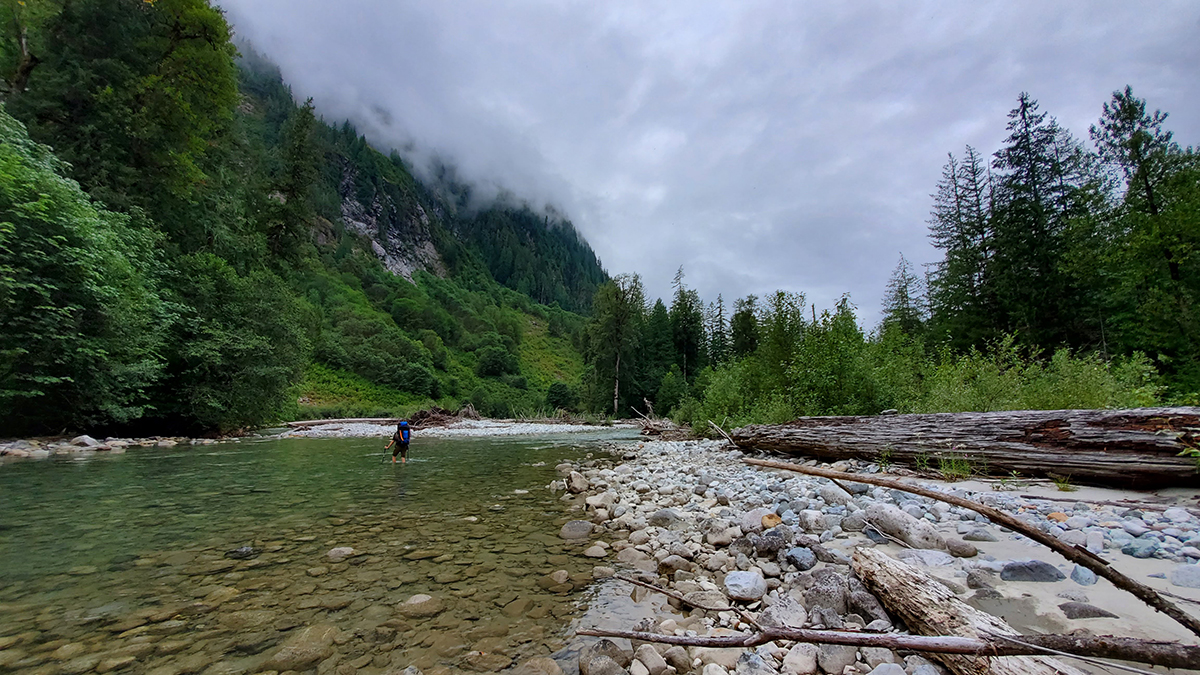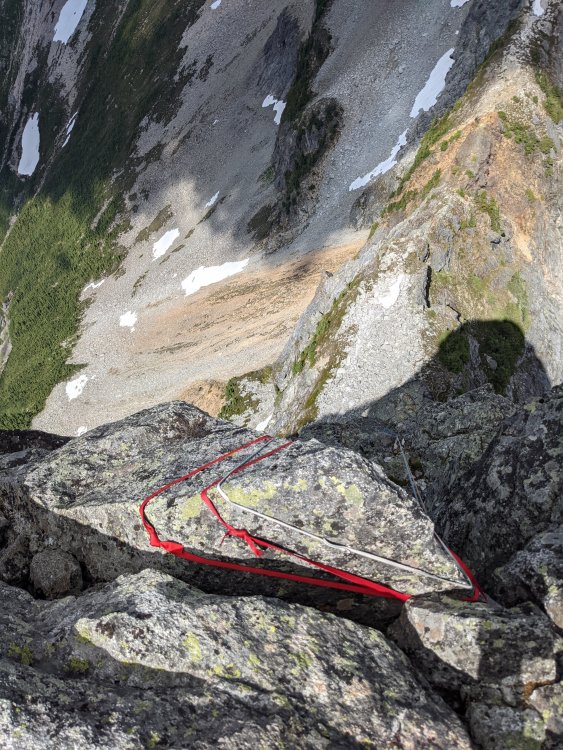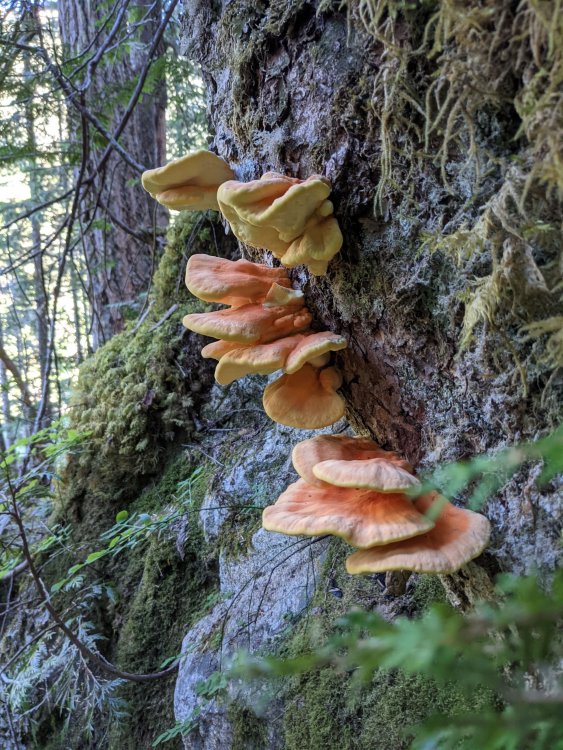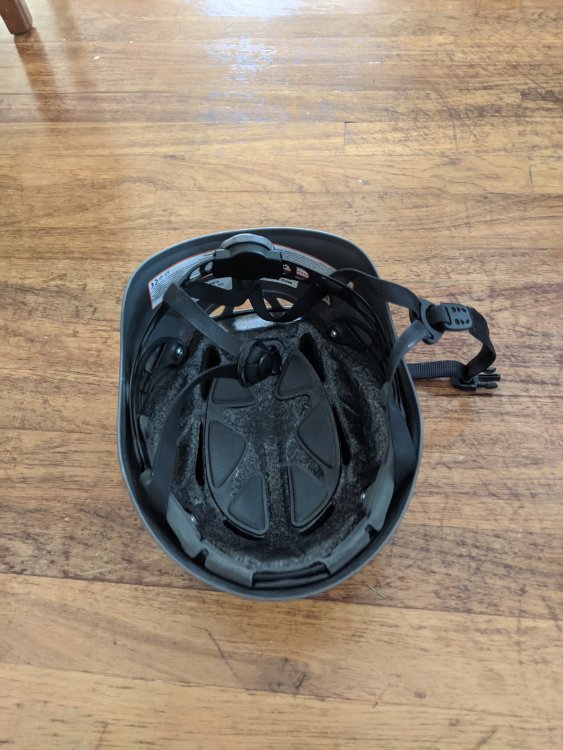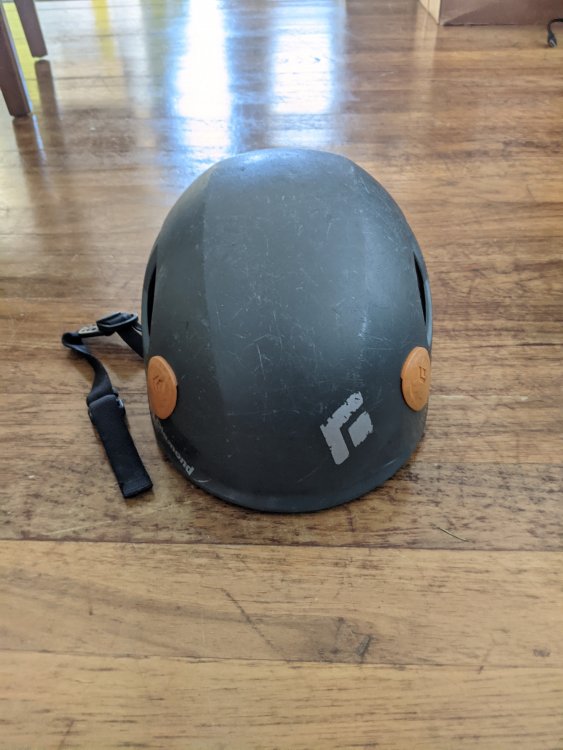
manninjo
Members-
Posts
124 -
Joined
-
Last visited
-
Days Won
10
Content Type
Profiles
Forums
Events
Everything posted by manninjo
-
Awesome climbing again with you Sam after so many years, this climb went about as smoothly as I could have hoped! Great trip report on your blog, I recommend giving it a read. A few thoughts about the climb: Pleasant (and warm) temps made for light bivy gear and few layers needed Snow travel conditions and coverage were outstanding, mostly boot-sole to shoelace deep made for easy kicksteps and cramponing pretty much the whole time, never too firm or post-holely, with rubble, heather, and crevasses well covered We brought food for only 4 days/4 nights, and with meltwater never really carried more than ½ a liter of water at any given time (except on route) Certain sections of choss on the ridge required delicate climbing, alternating with heavy-handedness; we trundled a ton of stone, especially on the ridge crest Sam is an exceptionally strong and efficient partner who set much of the boot pack, led most of the pitches, and graciously humored me with belaying the Impasse both ways. We packed a lot into 4 days, with back-to-back 15-16 hour days including the full day climb and descent, followed by a marathon exit hike the final day all the way from the 7k ft moraine bivy south of Challenger to the car, leaving a little before 10am and making the trailhead around 2am. It was so hot the afternoon of our hike out, despite drinking 7-8+ liters of water and eating lots of salty snacks, by 10pm, what little urine I could pee was the color of motor oil. It was a little unsettling, to say the least. Fortunately, a couple days later and I’m no worse for the wear Here is a John Scurlock photo (used with permission) of the line, dotted sections were below the crest on the east. We did two rappels on route to get off or around gendarmes.
-
[TR] Forbidden Peak Winter Ascent - West Ridge 01/23/2022
manninjo replied to Eric Gilbertson's topic in North Cascades
Awesome, way to stick with! -
Strobach is coming in / was kinda in this past weekend. Ice was kinda chossy / friable on the lower tier "approach" pitches. Temps looked like they'd be keeping things that way this coming weekend. We went only to the Motherlode zone, it took 3.5 - 4 hours breaking trail to get in with snowshoes (recommended over skis). 2 hours to hike out with the trail in place.
- 28 replies
-
- 2
-

-
- ice climbing
- pnw
-
(and 1 more)
Tagged with:
-
Forecast is looking good for lowland forest ice! A PNW delicacy.
- 28 replies
-
- 2
-

-
- ice climbing
- pnw
-
(and 1 more)
Tagged with:
-
Hear, hear! Always appreciate having the site available for research, stoke, and more. Thanks @olyclimber and @jon! Dig the updated header / logo on the site too!
-
Went up to check out the north face on this peak (7th photo, above the wolverine tracks) with the last bit of good weather we had - can report that up close, the rock, although it is granite (or granitic), is pretty chossy looking. We elected to forgo further exploration beyond walking the base and went back up the standard NE ridge. Any likely route on the north face would seem to be best as a frozen/mixed endeavor. The whole hike, as advertised, had very little brush. Great way to spend a late September day off Hwy 20, had the mountain all to ourselves!
-
These are 3 brand new bolts between the 1st pitch anchors and 2nd pitch anchors on Snag ledge, where previously there were no bolts. There are other recent squeeze jobs at Erie (at powerline wall for example) that merit a sad head shake but don't rise to the level of "WTF?!" I was on the main wall last week and didn't realize they are actually 1/2 inch bolts and too big for the wrench on the metolius nut tool. These bolts change the character of a classic "learning" route by drawing a line up that section of rock rather than following one's nose on lead. I've climbed this route with lots of folks breaking into trad climbing and it really should remain a "traditional" route. I'd seen about the Boat Launch wall and Sisters range, these ill-conceived bolts seem like a trend and its not one I want to see. I'm all for bolts where they make sense, this just shouldn't be one of those places.
-
Rappelling in from the top of Springboard last night after work to do a couple long TR solo laps on the main wall, I discovered someone in the I'm guessing in the last 24-72 hours added 3 bolts to the second pitch of Zig Zag. This is a multipitch trad climb that literally generations of leaders have cut their teeth on. It's classic in the sense that its an easier multipitch trad climb reasonably close to population centers in western Washington. There are very few other climbs like it in the region. Pitch 2 is sporty but relatively easy, barely 5th class, a place for the leader to work on their head skills, manage a bit of a runout, and breathe a sigh of relief when they get in a good cam. I've read people's accounts of running into a retrobolt on a climb that was part of their growth as a climber and getting shocked and saddened, I now understand exactly what that feels like. I personally have never been really "anti bolt" but this crosses a line. Dallas Kloke, who I never got the pleasure of meeting, must be rolling over in his grave. I remember reading a trip report of his on this site where he climbs Zig Zag at night, in the winter. After doing a couple laps on Frogs, I climbed past the bolts to try and understand what was going on. If someone thinks this is an independent line worthy of being squeezed in, its simply not. It is squarely in the middle of the second pitch. Only the 3rd new bolt is a bit higher than the natural, "easiest" line. I am asking the equipper to remove the bolts at their soonest convenience, so they can use the hangers on an existing anchor upgrade or something.
-
Trip: Northern Pickets - Mt. Challenger Middle Peak & FA of SW Ridge of Challenger 5 (Peak 7,696) Trip Date: 08/18/2021 Trip Report: Northern Pickets, image pulled from publicly accessible Google Book Preview of Cascade Alpine Guide, Vol. 3. The SW Ridge of Peak 7,696 is the righthand skyline. Fair use intended. TL;DR: Climbing partners Joe Manning (manninjo) and Joseph Montange ventured up the wild and rugged Baker River valley in mid-August 2021, seeking a shortcut into the Northern Pickets. After several days of travel, we climbed a very fun, new, five pitch, 750', 5.7 route on the Mount Challenger massif, the Southwest Ridge of Peak 7,696 (aka Challenger 5). Baker River Mandatory wading on day 1 starts several miles upriver Time to go to the beach! It’ll be fun: miles of sandbars and loads of deep blue swimming holes. Wading up the river in tennies. Getting to curl our toes in the sand. Sounds promising as a way to approach the remote and reasonably inaccessible Picket Range. Relaxing, beachy-type vacations are not my norm, so the Baker River seemed like the best of both worlds. Get the summertime water fix AND have an adventure scoping out the “direct” route into the Northern Pickets. The approach, documented in the 1968 Tabor and Crowder guide, has no record of folks actually going all the way in that way in the last 50 years. I’m sure some folks have, only to be swallowed by brush and never seen again. Mike Layton wrote in 2006 that John Roper “thoroughly sandbagged” him and Wayne Wallace on their approach to Spectre Peak by suggesting the Baker River. Following “six hours to travel a mile and a half along the Baker River we bailed. Ahead were three more miles of rain, brush, and swift water followed by a 5000-ft climb to the ridge… after our eight-hour false start, we dragged our soggy asses and 25-lb packs to the Hannegan Pass parking lot to restart the trip.” Pioneer Ridge (center-right) and the confluence of Bald Eagle Creek and Baker River For our part, we wanted to push beyond the Pioneer Ridge version of the Baker River approach and continue up the river, to the confluence of Picket and Mineral Creeks. From here, a spur ascending all the way to the Mt. Challenger massif would provide an escalator into the alpine. In fact, after all the beach time, we’d probably need to burn off some of those beach-induced calories. In all seriousness, there’s really no easy way into the western side of Northern Pickets. For a fit and competent party, stocked with full climbing kit and several days of food, Easy Ridge, Whatcom Pass and Peak, Eiley Wiley, even carrying over Fury all take at least two days. Sometimes fast and light parties get to Perfect Pass in a day for a two-night blitz of Mt. Challenger. But if you want to do something on the west side of Spectre, Phantom, Ghost, Crooked Thumb, anything on the south side of Challenger, it's two days just to get there (and two more to hike out). It was with this knowledge that we set off up the Baker River, hoping to find the equivalent of the Northwest Passage into the Northern Pickets. While we may not have found quite that, we did get to spend several days in one of the most rugged, wild, untrammeled and primeval wilderness areas this side of Alaska. The fact that access started less than a 90-minute drive from home was remarkable. The sheer quantity and apparent quality of the granite cliffs spilling off the sides of Pioneer and Mineral Ridges is mind boggling. It’s a beautiful looking mix of Index town walls, Squamish, Darrington, Yosemite, name any notable granite bigwall area. Were it not for a lack of trails and fixed anchor ban in the park, this zone would be a serious destination. As it exists today, it's worth admiring the incredible views every step of the way in. Just don’t forget to watch your step along the way. For folks who find off-trail travel “not so bad,” the stats are compelling. It's less than half the distance of any other way into the range, and less than half the elevation gain. There is no penalizing elevation loss. The approach lacks the objective hazards (e.g. icefall traversing around Whatcom Peak) and subjective hazards (e.g. exposed, loose scrambling over Whatcom or across the Imperfect Impasse) one would find coming in from other directions. The Baker River is a late season approach - the river needs to be low enough to regularly ford and wade. Most of the river walking we did was shin to knee deep. A pair of low top mesh approach shoes worked perfectly to hike in and out of the river. We got waist deep in the river once or twice, though that may have been avoidable. Make sure you line your pack with a garbage bag or other waterproofing. Sections of mandatory bushwhacking punctuate the river walking There is unavoidable brush, including some that registers as “BW5” on the Cascade Brush and Bushwhack scale. As with most off-trail approaches, the bushwhacking was far worse going in than coming out. Only a handful of times did patience grow thin and tempers flare due to frustrating travel conditions. Another dead end in the brush led Joseph to remark that “it wouldn’t be an adventure if there were no doubts.” At this point, with the hour growing late on the first day, we were having some serious doubts about the viability of the approach. After a breather and channeling the power of positive thinking, we made it through the worst of the brush and found ourselves a mossy camp in open forest next to a brook and several large boulders. With full packs loaded for climbing out of a base camp, it took about the same amount of time to go in this way compared to past experience with the more-frequently documented approaches. The crux of the approach, encountered on day two for us, was the wooded spur above the confluence of Mineral Creek/Baker River and Picket Creek. The wooded spur with approximate line and color showing slope angle It starts out innocuously enough. Low angle, brush-free walking past ancient cedars the size of skyscrapers, some well over 15 feet in diameter, soon gives way to steeper and steeper hillside. In what could be the toughest 2,000 feet of elevation gain anywhere, you’ll fight insanely thick brush, mostly saplings and huckleberries, all at a gradient of over 30 degrees, while dodging cliffs including a significant band at about 4,000 feet elevation. Helmets and dirt-ponning may feel necessary to descend safely. Steep huckleberry Typical brush thickness on the wooded spur Several cliff bands are hidden in the brush of the wooded spur Perhaps the effort overall is greater going off trail, though that is going to vary individual to individual. Climbers with their brushmaster degrees, good route finding skills and smaller, lighter packs could conceivably make it to the Challenger 4/5 col or Phantom alp slope camp (or pretty close) in a single big day via Baker River. We broke out of treeline on the afternoon of our second day, hiking into a thickening misty fog. Wonderful camping exists there on grass patches among the heather fields next to perfect 250 gallon tarns. Bring a water filter for the tarn water. Camping on a natural grass tent pad next to water around 4,900 ft Our third day, we woke up to driving rain - not the forecast we hiked in with. It broke into a light drizzle by midmorning and up the alp slope ridge we went, reconning for a higher camp. By midday, an updated forecast gave us a limited window to climb the next day only, August 18th. Chance of showers returned the afternoon of the following day, August 19th. Being well provisioned for several days of rock climbing, the change in weather was disappointing but we’d have to make due. Resigned to the revised forecast; Mineral Mt. in background As I’ve learned in the Pickets, 20 or 30% chance of showers is pretty much 100% chance of rain and low-to-no visibility. We ended up moving camp on day three just a half mile further up the ridge, to a larger patch of grass with an even deeper little tarn and mystifying views of Whatcom Peak, Mineral, Shuksan, Baker/Kulshan and numerous other mountains. We elected to leave base camp there on the ridge around 5,200 ft and go light above. Camp 2 on the ridge, Whatcom Peak in the mist and Perfect Pass at center right We had big (for us) ambitions for our week, yet somehow even the best-laid plans seemed to get waylaid by weather and slowed down by river crossings, vine maple, cliffs, huckleberry, and route finding. Southwest Ridge of Challenger 5 (Peak 7,696), 5.7, 5 Pitches, 750’, Grade II Rock climbing can be just plain Type I fun. You’re outside, with good company, in good weather, using your brain and body to briefly overcome gravity, dancing with the minerals, having a jolly ‘ol time. For whatever reason, granite especially lends itself to this kind of climbing. Joseph contemplating existence on the summit of Mt. Challenger's Middle Peak After scrambling Mt. Challenger’s Middle Peak on day four, Wednesday morning, August 18th, and considering different options for more climbing, we circled back to the south face of Challenger 5 to scope out some pretty neat looking rock. The granite was white to dark with a golden burnt orange in places, peppered with blocks, flakes, and large chicken heads. Fun scrambling to contour back west under Challenger 5's south face Anywhere else these cliffs would be stacked with moderate trad lines. We contoured all the way around the south face until there was nowhere left to go. The southwest ridge dropped off down the imposing west face. Above, a distinct ridgeline ambled up towards the summit. Belay at start of route The route started from a broad, jumbled, and blocky ledge system roughly where the seasonal snow line of the SW ridge ends and the more black, lichen-stained rock begins. If you were hiking directly up the ridge from below, it might be possible to add another pitch for fun, but we cast off from the highest “scramble accessible” point. Climbing on pitch 1 The first pitch went up slabs, followed by a left-facing corner with a laughably fun 5.6 hand crack. Above the corner, a good stance on a ledge set up a short finger crack to another ledge. The rock was exceptionally solid and remarkably splitter, with bomber gear exactly where you might want it. Topping out pitch 1 Starting pitch 2; camp, approach ridge, and Baker River all lower left The climbing went for four more pitches like this, ledgy yet exposed ridge climbing punctuated by fun crack segments. Every roughly 40 - 45m pitch ended at a spacious belay ledge with a slingable horn or solid crack for gear. Views and position on the peak were something to behold. Climbing on pitch 2 Pitch four was the standout, with an improbable and slightly intimidating step right onto the exposed face after a short offwidth pillar. A horizontal traverse with a few hundred feet of exposure led to a straight up crack system culminating in another perfect hand crack, which started at red camalot and ended with a good little stretch of near-vertical number 3 jamming. A final mantel ended on a flat ledge big enough to park a bus on. Awesome exposure and jamming on pitch 4 Huge belay ledge at top of pitch 4 The final 60m pitch cut hard left, off the ridge and onto the west face via an unmissable ledge system. A blocky and slightly loose gully led directly to the summit, with the headwaters of the Baker River 4,000 feet below nipping at our heels and Shuksan and Kulshan swirling in the clouds to the west. Final climbing to the summit As soon as it came in, our weather window was on the way out. Within 15 minutes of arriving on top we were getting engulfed in the mist. We’d left our axes and crampons at the base of the route, and not knowing there was a scramble route off the peak, we elected to rap the south face from the summit and contour back to our gear. In hindsight, had we carried glacier travel gear, we could have descended to the north and potentially gotten back on the glacier, climbed back up to the col, and returned that way. In any case, two raps with two ropes got us off the steep terrain. We retrieved our gear from the base and headed back down the ridge to our 5,200 ft camp, arriving just in time for an incredible sunset as the clouds broke once again. A view of our route from the approach ridge Descending on the approach ridge Back at camp Deproach With the chance of showers in the forecast, we felt good about two summits, a new route, and three nights camped out on an incredible ridge. Now all that was left to do was to reverse miles of steep, trailless wilderness back to civilization. 40 degree huckleberries on the descent Finding the "secret passage" through a major cliff band; we were prepared to rappel, yet managed to avoid it on the way down We camped at the beach for our final evening, near the confluence of Bald Eagle Creek and the Baker River. There was enough sand to walk around barefoot and relax, taking in views of Scramble Creek falls and the North Ridge of Mt. Blum. Surprisingly, someone had camped there in the days we were up high and had left a fire pit, complete with charred logs. One might think the novelty of wading down a river would wear off by the last day of the trip, but surprisingly it didn’t. Out the way out, we knocked over a handful of cairns we made for ourselves on the way in. The only other sign of people we saw was the fire scar and some fishing line at the final campsite, which we packed out. It'd be great to keep it that way for the future. My opinion is this approach is destined to remain in obscurity when “easier” approaches exist, but it is a truly direct and viable way in to the Pickets. Having the right attitude about brush would help immensely. Walking in the river beat the heck out of the alternative Take only pictures, leave only footprints In the days since, I’ve been dreaming about the walls back there, packrafting part of the deproach, scheming about another trip back into the wilderness of the great nearby. It’s adventures like these that, for me, climbing in the Cascades are all about. Many thanks to Joseph for the great company, partnership, use of photos, and willingness to try something different. Gear Notes: Extra shoes for wading, rock climbing gear to #3 camalot, crampons/ice axe for glacier travel Approach Notes: Starts from the Baker River Trailhead. See Tabor and Crowder's "Routes and Rocks in the Mt. Challenger Quadrangle" and Beckey's "Cascade Alpine Guide, Vol. 3" for more approach details.
-
[TR] The Chopping Block - NE Ridge 07/24/2021
manninjo replied to tanstaafl's topic in North Cascades
We were maybe as surprised as you to see another party on the route! Great work on sending up there! It is a solid hike in and out. I'm glad 30-something still counts as young haha. Second the shoutout to Jim Nelson, the Edelrid rap/tag line I got at Pro Mt Sports a few years ago is nice and light and still holding strong. 2 ropes are definitely not necessary to get down, a couple key stations are a bit hidden and it seemed like a single rope would work fine. We got down in 3x 50m raps with a touch of easy downclimbing. As others have noted here on the site, the rappels are "weird" - caution is merited with how the mostly rounded horns are loaded - had the top anchor slide up the horn a couple times and needed to reset it. Lots of water sources in the basin still running as of last weekend. -
Mount Vernon / Skagit Valley as home base for WA climbing
manninjo replied to manninjo's topic in Climber's Board
Fortunately (or unfortunately) not a mtn biker! -
Mount Vernon / Skagit Valley as home base for WA climbing
manninjo posted a topic in Climber's Board
I understand there are a few of you on here that call Skagit home. From a climber-who-doesnt-mind-driving perspective, Mt. Vernon seems to offer plenty of options: Riverstone Rock Gym, 10 mins; Mt. Erie, 20-30 mins; Chuckanut sandstone, 20-30 mins; top secret Skagit sport crag and other spots, 20-30 mins; Darrington, 1hr; Index, 1hr 15mins; Newhalem, 1.5hrs; Washington Pass, 2.5 hrs; Squamish, 2.5 - 3hrs etc. What's the community like and what are folks' thoughts on living there? Is it a good spot to be a climber? If someone was renting part of their house, are there enough outdoors-minded folks in the rental market? I'm coming from Bellingham as a home base the last several years. -
Trip: Tahoma / Mt. Rainier - Gibraltar Ledges Trip Date: 03/13/2021 Trip Report: @aikidjoe and I hiked / climbed Gibraltar Ledges on Saturday, March 13th. Left the parking lot Friday evening about 5:30pm and returned about the same time Saturday. Skinned to Muir with a great track(s) and easy snow conditions. Had our fingers crossed that the hut would be open - alas, four to six folks had set up in there. Given we're not done with the plague quite yet, we elected to dig a little double-wide snow coffin and settle in for an open bivy. Thankfully the wind was light and our 20 degree bags were sufficient. I want to thank the gentleman who came out of the hut and insisted we stay in there, the gesture was appreciated! We felt good sleeping out despite the insistence that there was 'no covid' in the hut. After a solid 6+ hour sleep, we left Muir about 6am. A superb bootpack led all the way up to, across, and out of the ledges. Roped up at the shoulder of Gib Rock (~12,500), shortly after Joseph put his whole left leg in a hidden crack. Wands on the upper mountain were helpful in navigating crevasses and led pretty nicely to the top. We ran into three skiers who got to enjoy some chalky, not really icy snow on the upper mountain. There was also one set of ski tracks in Gib Chute which appeared to be in great shape. Looking down the Ingraham, it was clear no one was descending that way and getting down it would be a pain with how broken up the glacier was. We hit the summit crater about noon and decided to call that good, based on having to re-cross the ledges in the afternoon sun, as well as some threatening clouds gathering on the other side of the summit zone. Descending was made easier by whoever left the wands up there. Not to let Joseph be outdone, I also managed to put a whole leg in a crack that was thinly covered by some wind transported snow. Getting back across the ledges after noon was a tad stressful, fortunately no rockfall occurred on the way through. The nice snow we had skinning up the night before had transformed into a crusty nightmare just below Muir. It got softer and more consistent by Pan Face, which made for some fun turns on tired legs. No trip to Rainier is complete without a wildlife sighting - this parking lot fox was pretty tame and hardly wild. Can't believe it had been almost 4 years since my last time up Rainier, almost forgot how much fun the slog can be! It helps to have great weather, a solid partner, and nice folks ahead to break all the trail. To paraphrase a dear friend, the mark of a good weekend is whether or not one's soul was refreshed. By that measure, it was certainly a soul refreshing weekend. Spring is here and the mountains are calling! Gear Notes: 60m skinny cord, glacier gear, sunscreen, warm layers, splitboard w/ ski boots Approach Notes: Well established trail all the way
-
-
[TR] Mt Stuart - Stuart Glacier Couloir 04/05/2019
manninjo replied to Woodcutter's topic in Alpine Lakes
Sweet topo! -
[TR] North Cascades- Boston Basin - The Boston Marathon 07/10/2018
manninjo replied to Sam Boyce's topic in North Cascades
Burly! Thanks for posting this.


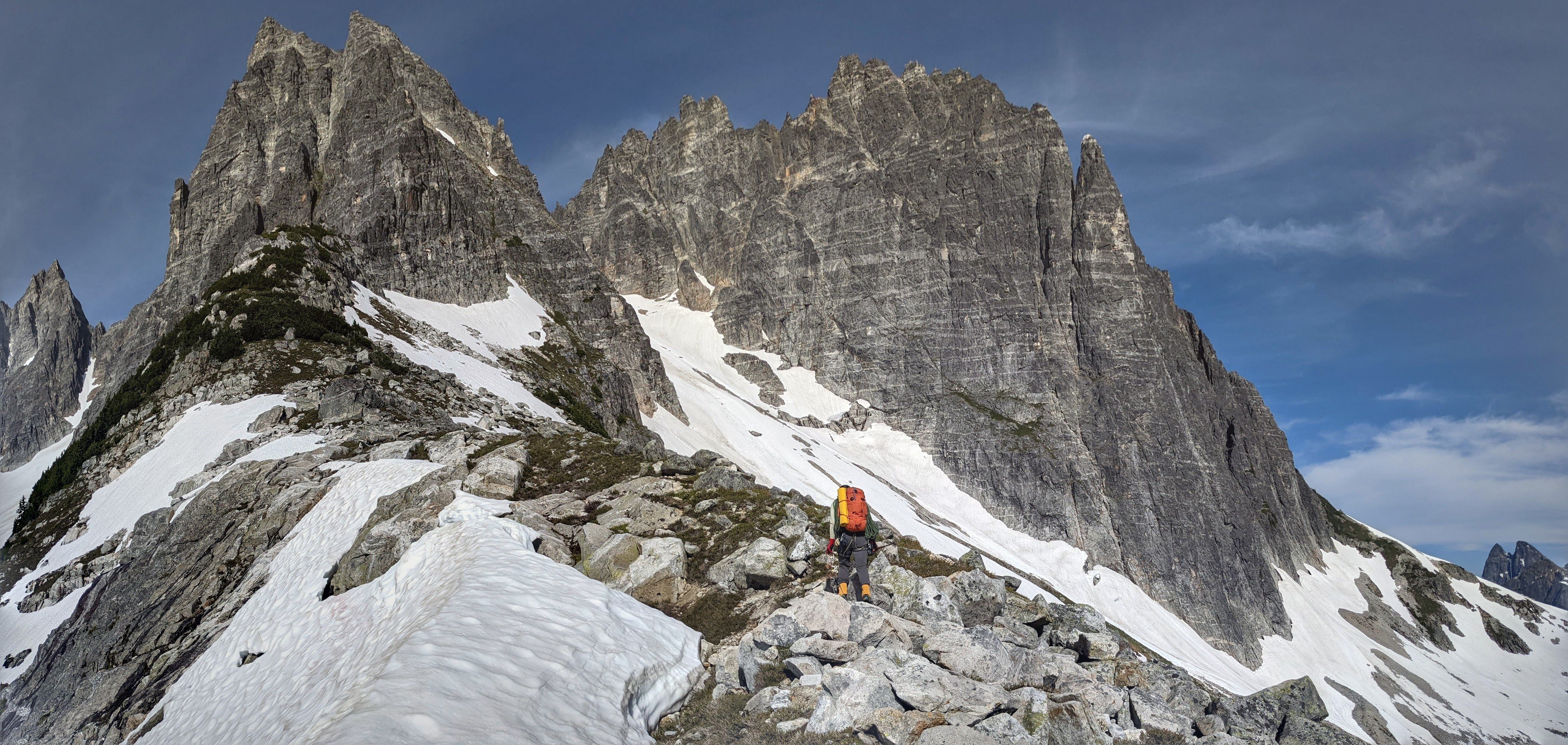
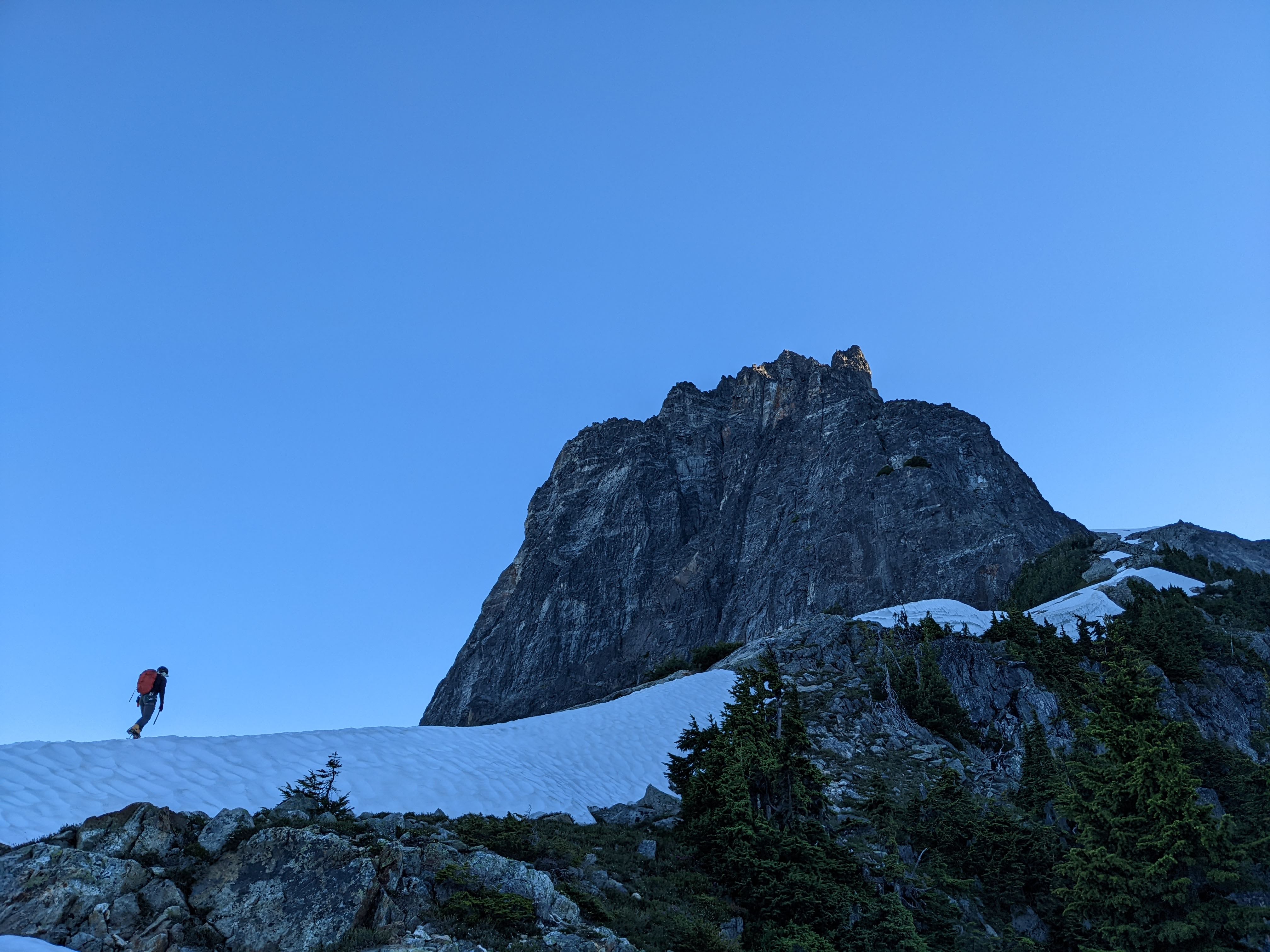
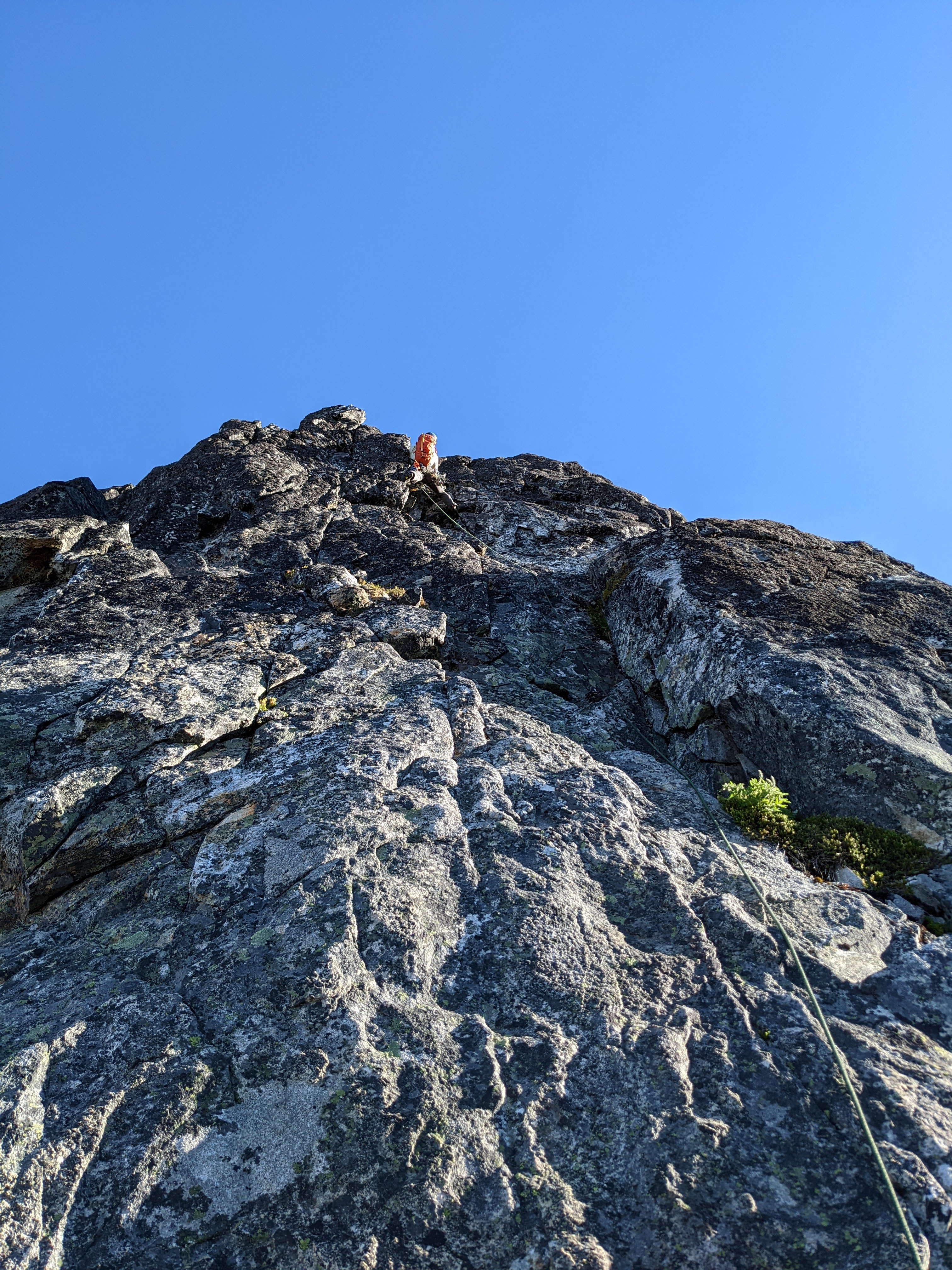
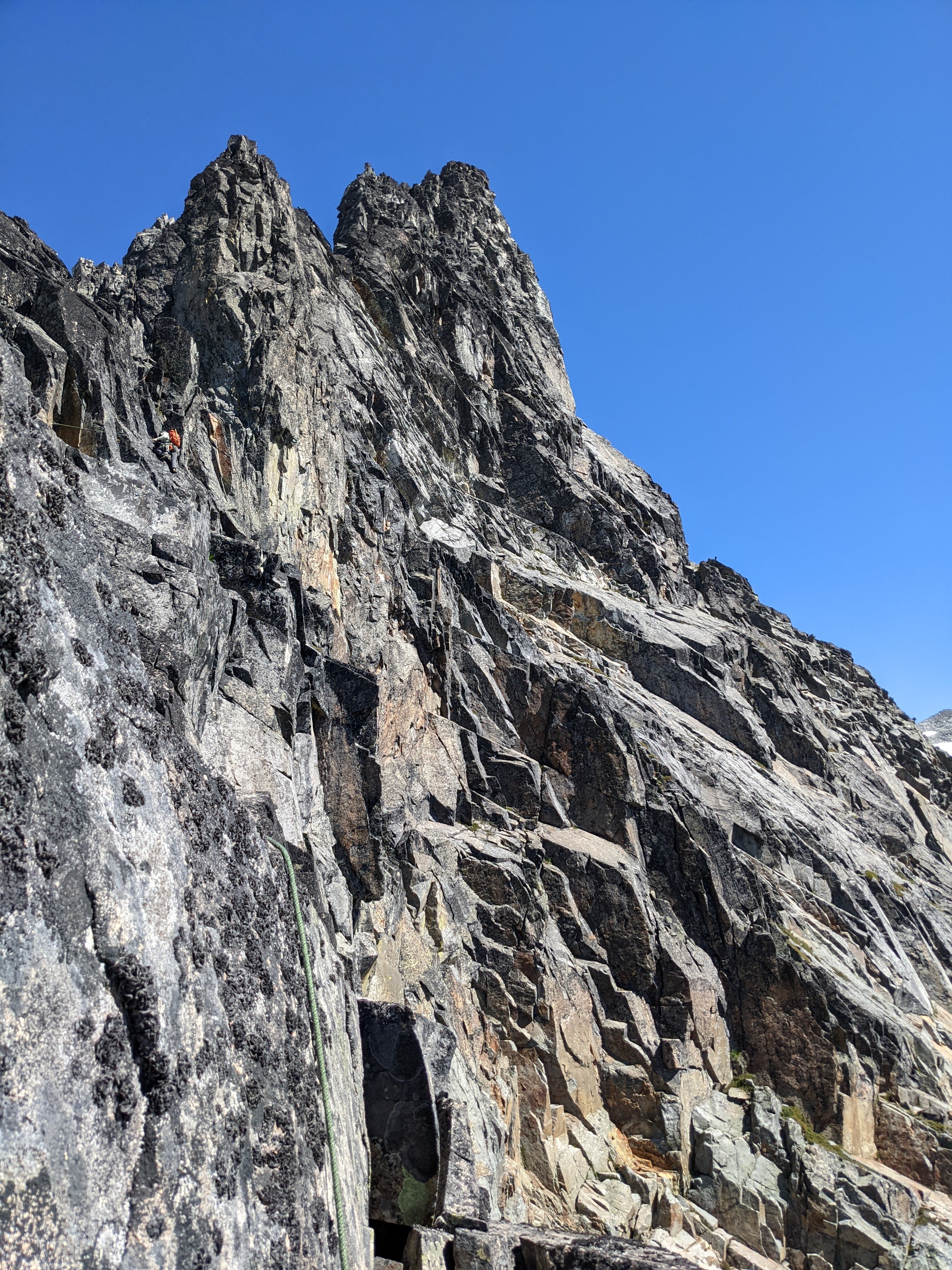
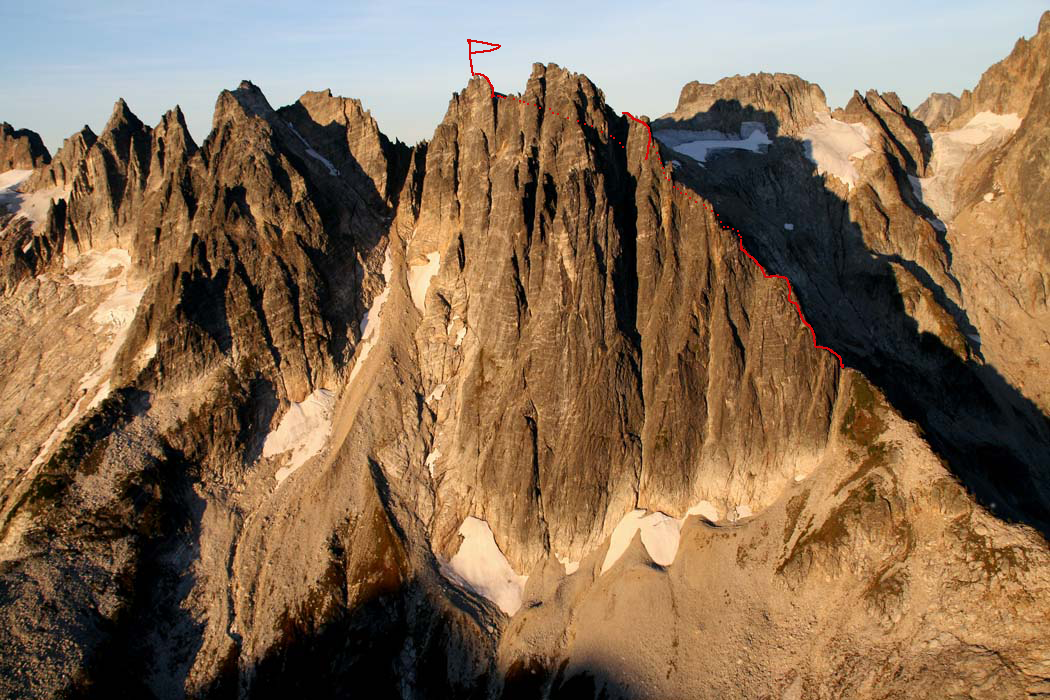
.jpg.e8535cd9c4fa709b432c381f95680a86.jpg)
.jpg.e7173272c562cc0e2ad237d1b65289f9.jpg)
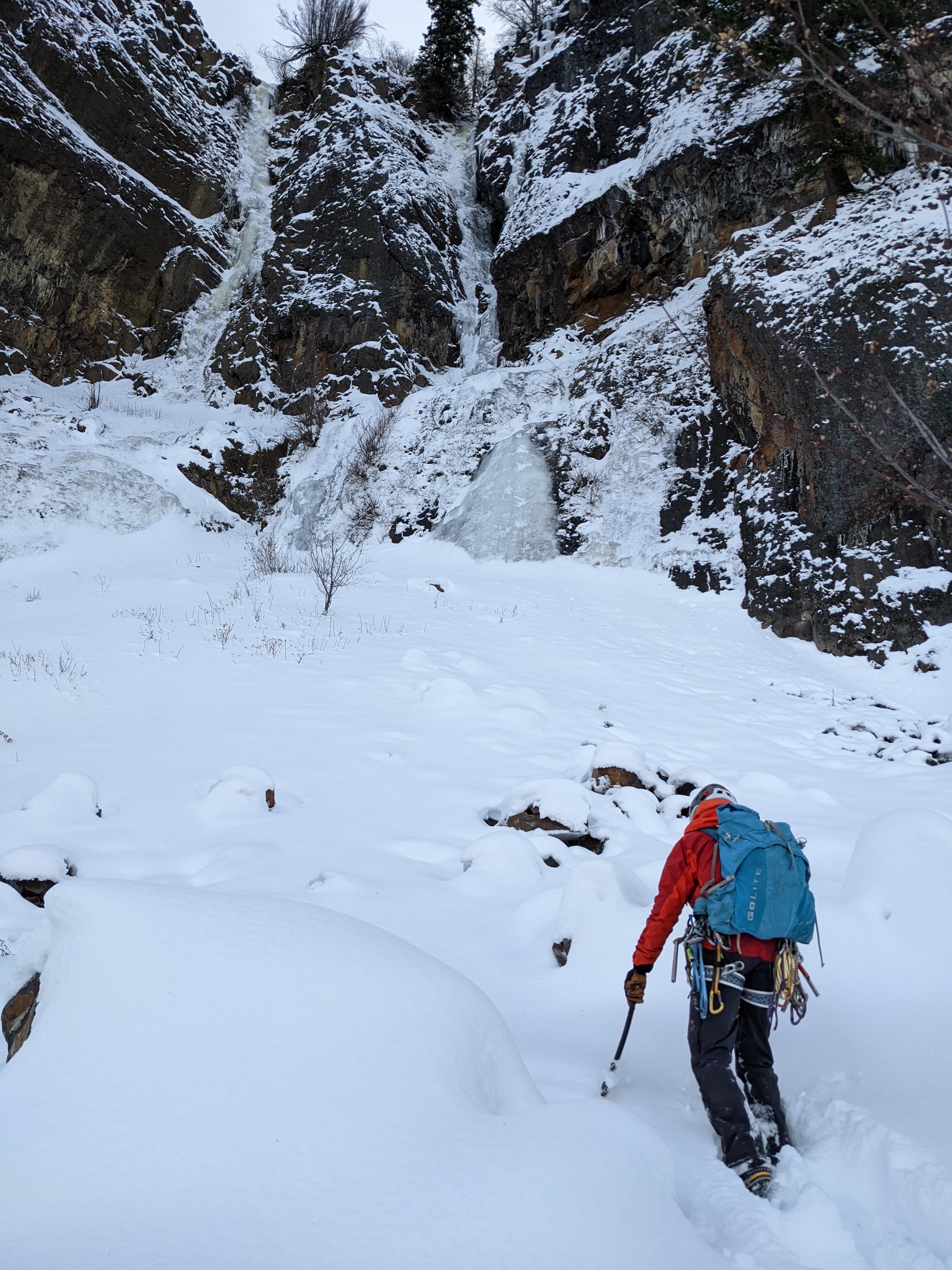
.jpg.7400e590579b0c0660f6ce75b2529f7b.jpg)

